![]()
![]()
![]()
(Speakers listed below in name alphabet order)

Fumiyuki Adachi (IEEE Life Fellow, IEICE Fellow)
Specially Appointed Professor for Research, Tohoku University, Japan
Title: Diversity, Multiplexing, and PAPR Reduction Techniques for 5G Distributed MIMO Radio Access Network
Time: 10:00 - 10:30, Tuesday, February 19, 2019
Abstract:
Recently, the development of 5G mobile communications systems has been intensified to in order to start 5G services in around 2020. Significantly improving both the spectrum- and energy-efficiencies compared to 4G systems is demanded. One promising approach is an introduction of distributed MIMO radio access network (RAN), where a number of antennas are spatially deployed over a macro-cell area. A new frequency band, e.g. the mm wave band, where abundant bandwidth remains unused, will be utilized for enhanced mobile broadband (eMBB) services. Therefore, there will be a high Doppler shift problem and also a peak-to-average power ratio (PAPR) problem. In this talk, cooperative signal transmission techniques for 5G distributed MIMO RAN are presented, including diversity, multiplexing, and PAPR reduction, which are robust in a high Doppler shift environment. In distributed MIMO RAN, adjacent macro-cells are loosely connected, and hence, the inter-cell interference (ICI) problem will be produced. In this talk, adaptive ICI coordination (ICIC) is also presented.
Biography:
Fumiyuki Adachi received the B.S. and Dr. Eng. degrees in electrical engineering from Tohoku University, Sendai, Japan, in 1973 and 1984, respectively. In April 1973, he joined the Electrical Communications Laboratories of Nippon Telegraph & Telephone Corporation (now NTT) and conducted various researches on digital cellular mobile communications. From July 1992 to December 1999, he was with NTT Mobile Communications Network, Inc. (now NTT DoCoMo, Inc.), where he led a research group on Wideband CDMA for 3G systems. Since January 2000, he has been with Tohoku University, Sendai, Japan. His research interests are in the area of wireless signal processing (multi-access, equalization, antenna diversity, adaptive transmission, channel coding, etc.) and networking.
He is an IEEE Life Fellow and an IEICE Fellow. He was a recipient of the IEEE Vehicular Technology Society Avant Garde Award 2000, IEICE Achievement Award 2002, Thomson Scientific Research Front Award 2004, Ericsson Telecommunications Award 2008, Prime Minister Invention Award 2010, KDDI Foundation Excellent Research Award 2012, C&C Prize 2014, IEEE VTS Stuart Meyer Memorial Award 2017, and IEEE ComSoc RCC Technical Recognition Award 2017. He is listed in Highly Cited Researchers 2001 (https://clarivate.com/hcr/researchers-list/archived-lists/).
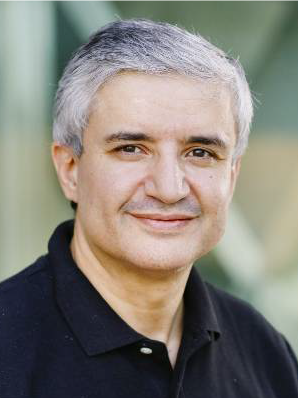
Mohamed-Slim Alouini (IEEE Fellow)
Professor, University of Science and Technology (KAUST), Saudi Arabia
Title: Addressing spectrum scarcity through hybrid optical and radio-frequency wireless networks
Time: 15:00 - 15:30, Thursday, February 21, 2019
Abstract:
Rapid increase in the use of wireless services over the last two decades has led the problem of the radio-frequency (RF) spectrum exhaustion. More specifically, due to this RF spectrum scarcity, additional RF bandwidth allocation, as utilized in the recent past, is not anymore a viable solution to fulfill the demand for more wireless applications and higher data rates. The talk goes first over the potential offered by optical wireless (OW) communication systems to relieve spectrum scarcity. It then summarizes some of the challenges that need to be surpassed before such kind of systems can be deployed. Finally, the talk offers two recent studies illustrating how supplementing OW networks with RF backup access points increases these
networks reliability and coverage while maintaing their high capacity.
Biography:
Mohamed-Slim Alouini was born in Tunis, Tunisia. He received the Ph.D. degree in Electrical Engineering from the California Institute of Technology (Caltech), Pasadena, CA, USA, in 1998. He served as a faculty member in the University of Minnesota, Minneapolis, MN, USA, then in the Texas A&M University at Qatar, Education City, Doha, Qatar before joining King Abdullah University of Science and Technology (KAUST), Thuwal, Makkah Province, Saudi Arabia as a Professor of Electrical Engineering in 2009.
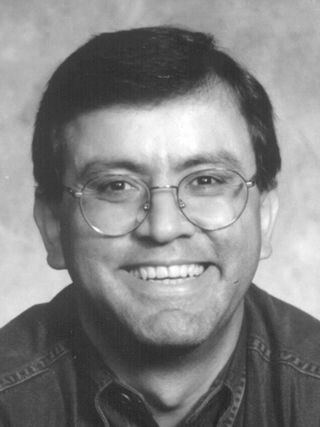
Ender Ayanoglu (IEEE Fellow)
Professor, University of California, Irvine, USA
Title: Spatial Correlation in Single-Carrier Massive MIMO
Time: 16:00 - 16:30, Tuesday, February 19, 2019
Abstract:
In this talk, we present a single-carrier massive MIMO
transmission system for the frequency selective Gaussian multi-user
channel, in both uplink and downlink directions. We consider both
cases of spatially uncorrelated and correlated channel and compare
them in terms of the user achievable sumrate.
First, we consider a downlink channel. We develop a general expression for the achievable rate among users in the channel with and without correlation among antennas at the base station. It has been shown that, for the downlink channel, when there is no correlation between base station antennas or users, the Channel Matched Filter Precoder (CMFP) outperforms all the other precoders. In a highly-correlated massive MIMO downlink channel however, conventional CMFP does not perform as expected. We show the failure of CMFP in the presence of two different correlation patterns among antennas at the base station and suggest better precoding schemes which lead to a better achievable rate among users. We show that the suggested precoders outperform conventional CMFP. Second, considering the same groups of users and antennas, we develop a model for the uplink channel. Using two equalizer structures, we show the results of system performance in terms of achievable rate at the base station.
Biography:
Ender Ayanoglu received the M.S. and Ph.D. degrees from Stanford University, Stanford, CA in 1982 and 1986, respectively, in electrical engineering. He was with the Communications Systems Research Laboratory, part of AT&T Bell Laboratories, Holmdel, NJ until 1996, and Bell Labs, Lucent Technologies until 1999. From 1999 until 2002, he was a Systems Architect at Cisco Systems, Inc., San Jose, CA. Since 2002, he has been a Professor in the Department of Electrical Engineering and Computer Science, University of California, Irvine, Irvine, CA, where he served as the Director of the Center for Pervasive Communications and Computing and held the Conexant-Broadcom Endowed Chair during 2002- 2010. His past accomplishments include invention of the 56K modems, characterization of wavelength conversion gain in Wavelength Division Multiplexed (WDM) systems, and diversity coding, a technique for link failure recovery in communication networks employing erasure coding in 1990, prior to the publication of the first papers on network coding. During 2000-2001, he served as the founding chair of the IEEE-ISTO Broadband Wireless Internet Forum (BWIF), an industry standards organization which developed and built a broadband wireless system employing Orthogonal Frequency Division Multiplexing (OFDM) and a Medium Access Control (MAC) algorithm that provides Quality-of-Service (QoS) guarantees. This system is the precursor of today’s Fourth Generation (4G) cellular wireless systems such as WiMAX, LTE, and LTEAdvanced. From 1993 until 2014 Dr. Ayanoglu was an Editor, and since January 2014 is a Senior Editor of the IEEE Transactions on Communications. He served as the Editor-in-Chief of the IEEE Transactions on Communications from 2004 to 2008. From 1990 to 2002, he served on the Executive Committee of the IEEE Communications Society Communication Theory Committee, and from 1999 to 2001, was its Chair. Dr. Ayanoglu is the recipient of the IEEE Communications Society Stephen O. Rice Prize Paper Award in 1995 and the IEEE Communications Society Best Tutorial Paper Award in 1997. He has been an IEEE Fellow since 1998.
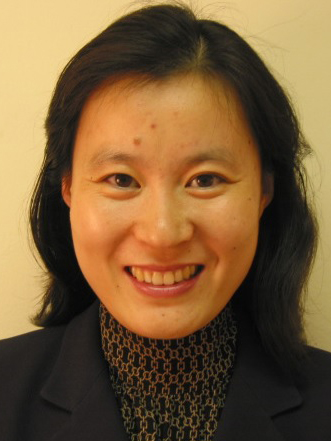
Xiuzhen Cheng (IEEE Fellow)
Professor, George Washington University, USA
Title: Blockchain and Its Applications
Time: 13:30 - 14:00, Thursday, February 21, 2019
Abstract:
TBD
Biography:
Xiuzhen "Susan" Cheng's research spans the broad area of wireless networking and mobile computing. She is currently working on a few projects that tackle the challenges of efficient network resource management, role-based access control and secure communications, dynamic spectrum access, and economically-robust/secure auctions. Professor Cheng is also interested in applying wireless networking to public health. She has been working on target vaccination based on social networks, security and privacy concerns in wireless body area networks, and safety enhancement via vehicle networks. She is a Fellow of IEEE.
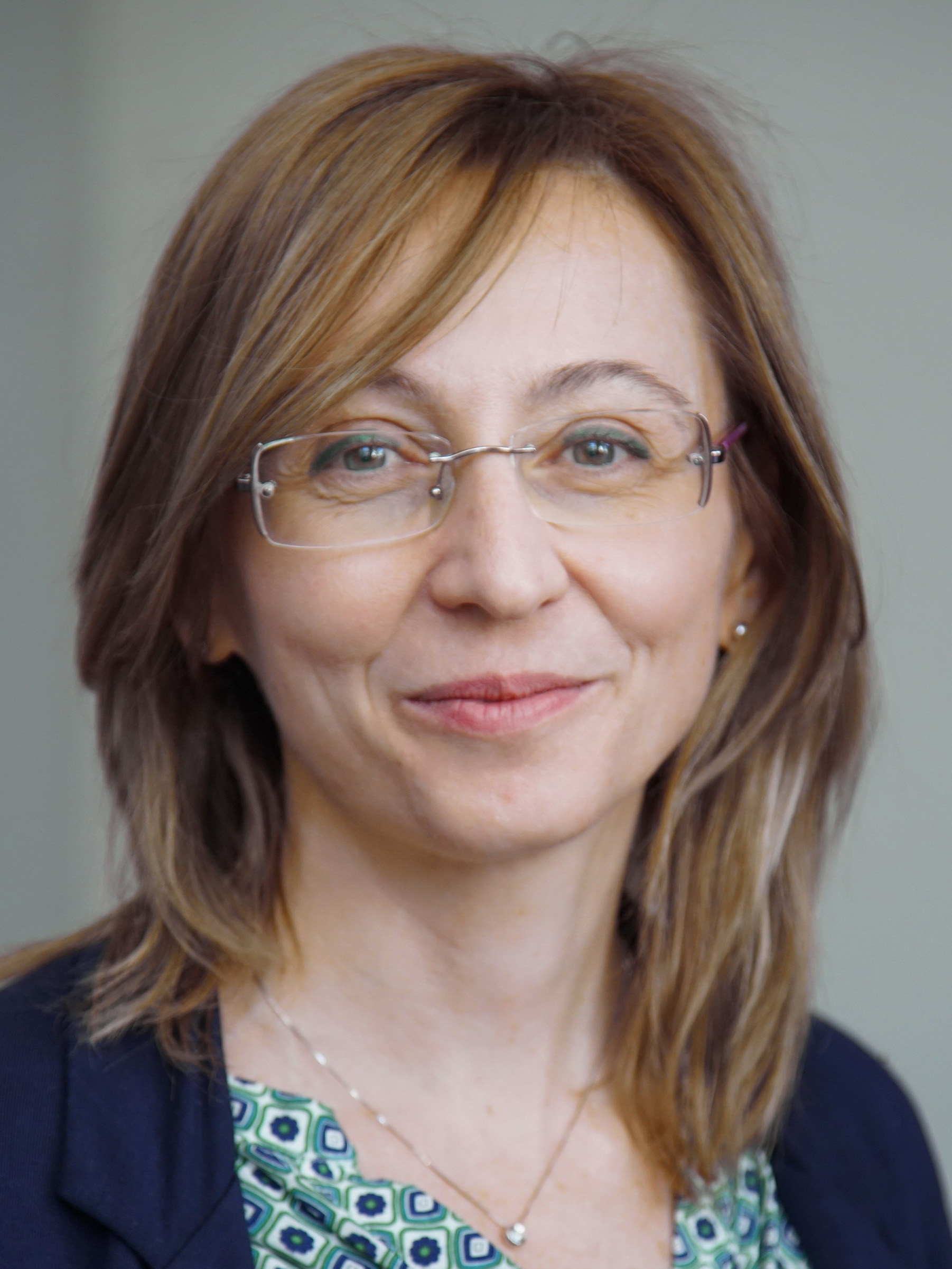
Carla-Fabiana Chiasserini (IEEE Fellow)
Associate Professor, Politecnico di Torino, Italy
Title: Vertical Service Deployment and Shifting in 5G Networks
Time: 10:30 - 11:00, Tuesday, February 19, 2019
Abstract:
It is common understanding that 5G networks are conceived for service deployment and support, not just for connectivity. In particular, automotive and e-health industries, as well as media content providers i.e., the so-called verticals, will request mobile operators to deploy services to be provided to mobile users. As part of the Service Level Agreement (SLA) between verticals and mobile operators, each service will be characterized by a set of requirements, both in terms of such high-level performance indices as reliability level, throughput, and latency, and in terms of networking, computational, and storage resources. It is up to the mobile operator to make decisions on how to deploy the vertical's services, which resources to use, and how to share them, depending on the load and the requirement to be met.
The talk will first highlight the main challenges to be addressed for an efficient deployment of vertical services in NFV-based 5G systems, putting particular emphasis on network slicing. It will then present possible optimizations and algorithms, and it will introduce the innovative concept of service shifting. The latter has been created to effectively cope with performance indices requirements and congestion conditions in the mobile operator's network. It consists in conceiving different versions of the same vertical service, each corresponding to a different amount of required resources for deployment and execution. To further clarify its benefits, the service shifting concept will be presented with reference to some real-world verticals' services.
Biography:
Carla-Fabiana Chiasserini received her Laurea Degree (110/110 summa cum laude) in Electronic Engineering from the University of Florence in 1996, and her Ph.D. in Electronic Engineering and Telecommunications from Politecnico di Torino in 2000.
Since 2000, she has been with the Electronics and Telecommunications Department at Politecnico di Torino, where she is currently an Associate Professor. Before her current appointment, she worked at the Politecnico di Torino under a Cselt (now TELECOM ITALIA) grant on wireless ATM networks (1996) and with a short-term position as an Assistant Professor (2000-2002). From 1998 till 2003, she did research work at the Center for Wireless Communications and at the California Institute for Telecommunications and Information Technology, University of California at San Diego. In 2012 and 2016, she was a visiting professor at Monash University (Australia).
She is an IEEE Fellow (class of 2018) and she is in the list of top Italian scientists kept by VIAAcademy. Her teaching duties at Politecnico di Torino include graduate-level courses on wireless communications and advanced topics on wireless networks. Since 2012, she has been the Coordinator of the Master Program in Communications and Computer Engineering at Politecnico di Torino. Since March 2018, she is the Rector's Delegate for Alumni and Career Orientation.
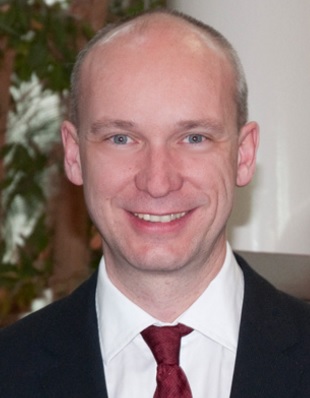
Falko Dressler (IEEE Fellow)
Professor, University of Paderborn, Germany
Title: Virtual Edge Computing Using Vehicular Micro Clouds
Time: 16:00 - 16:30, Tuesday, February 19, 2019
Abstract:
We will discuss the challenges and opportunities of the connected cars vision in relation to the need for distributed data management solutions ranging from the vehicle to the mobile edge and to the data centers. As a novel concept, vehicular micro clouds have been proposed that bridge the gap between fully distributed vehicular networks based on short range vehicle to vehicle communication and cellular based infrastructure for centralized solutions. We will discuss the need for vehicular micro clouds, followed by the architecture, formation of micro clouds, and feasibility of micro clouds. Furthermore, we will cover aspects of efficient data upload and download between cars and a data center facilitated by our micro cloud concept.
Biography:
Falko Dressler is Full Professor for Computer Science and Chair for Distributed Embedded Systems at the Heinz Nixdorf Institute and the Dept. of Computer Science, University of Paderborn, where he is also a member of the University Senate. Before moving to Paderborn, he was a Full Professor at the Institute of Computer Science, University of Innsbruck and an Assistant Professor at the Dept. of Computer Science, University of Erlangen. Dr. Dressler received his M.Sc. and Ph.D. degrees from the Dept. of Computer Science, University of Erlangen in 1998 and 2003, respectively. He is associate editor-in-chief for Elsevier Computer Communications as well as an editor for journals such as IEEE Trans. on Mobile Computing, Elsevier Ad Hoc Networks, and Elsevier Nano Communication Networks. He has been guest editor of special issues in IEEE Journal on Selected Areas in Communications (JSAC), IEEE Communications Magazine, Elsevier Ad Hoc Networks, and many others. Dr. Dressler has been chairing conferences such as IEEE INFOCOM, ACM MobiSys, ACM MobiHoc, IEEE VNC, IEEE GLOBECOM, and many others. He authored the textbooks Self-Organization in Sensor and Actor Networks published by Wiley & Sons and Vehicular Networking published by Cambridge University Press. Dr. Dressler has been an IEEE Distinguished Lecturer as well as an ACM Distinguished Speaker.
Dr. Dressler is an IEEE Fellow (COMSOC, CS, VTS) as well as a Senior Member of ACM (SIGMOBILE), and member of GI (GIBU, KuVS). He also serves in the IEEE COMSOC Conference Council. His research objectives include adaptive wireless networking, self-organization techniques, and embedded system design with applications in ad hoc and sensor networks, vehicular networks, industrial wireless networks, and nano-networking.
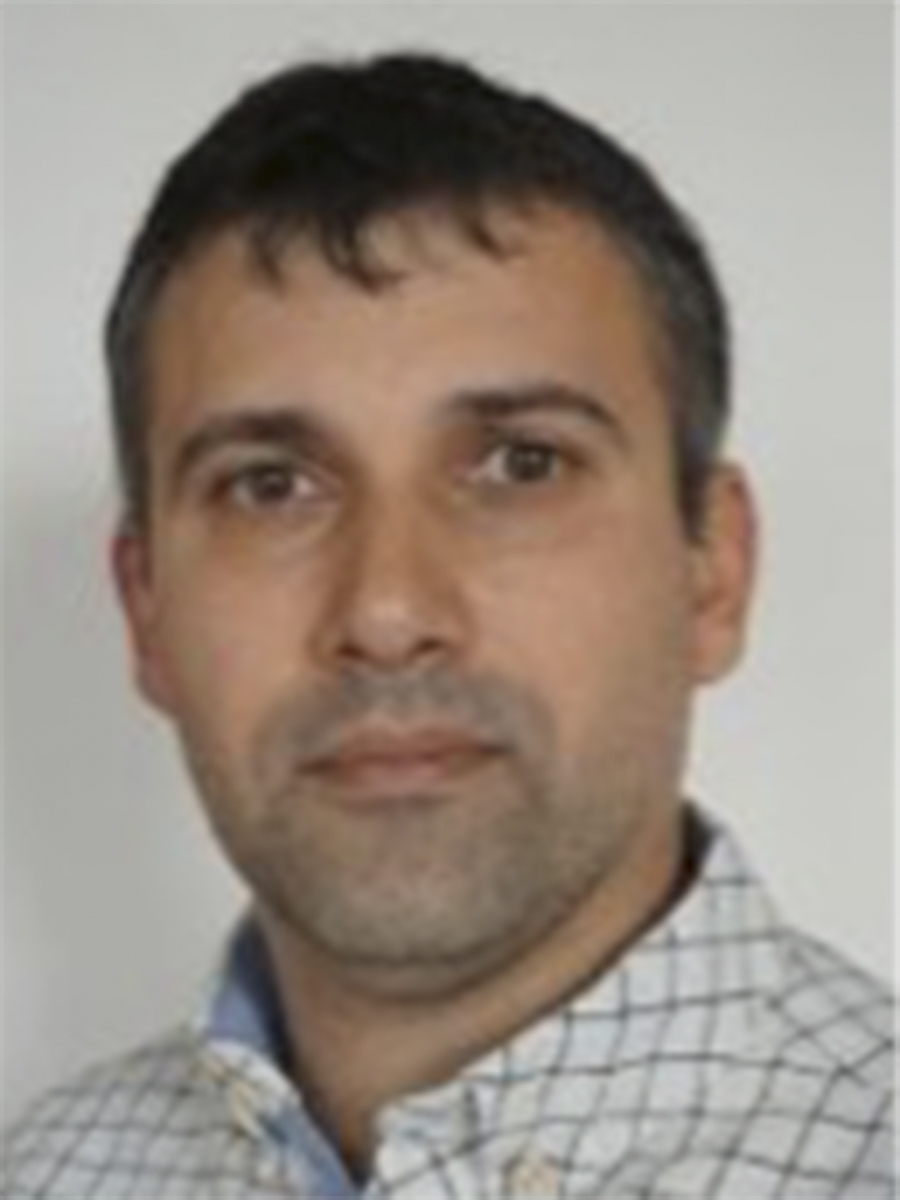
Haris Gacanin
Department Head, Nokia Bell Labs, Belgium
Title: Design of Intelligent Agents for Self-optimization in Wireless Networks: An AI Approach
Time: 16:30 - 17:00, Tuesday, February 19, 2019
Abstract:
Today, network operation is mainly reactive to enable corrective actions only when a problem has already occurred and detected by network counters or customer complaints. In the future, we envision self-organizing networks that exploit artificial intelligence (AI) to manage and optimize its performance in autonomous fashion. In this talk some of the challenges and future research directions are highlighted related to network automation with knowledge management (exploit past experiences to gain knowledge and act). The talk provokes new coming challenges and unveil necessary future directions across multi-disciplinary research areas. The challenges and requirements are firstly discussed with respect to network self-organization of complex system-of-systems of the future. A practical example of agent design with perception, reasoning and learning is presented to support a case study using developed prototype implementation using commodity wireless access points.
Biography:
Haris Gačanin received his Dipl.-Ing. degree in Electrical engineering from the University of Sarajevo in 2000. In 2005 and 2008, respectively, he received MSc and PhD from Tohoku University in Japan. He was with Tohoku University from 2008 until 2010 first as Japan Society for Promotion of Science postdoctoral fellow and later, as Assistant Professor. In 2010, he joined Alcatel-Lucent (now Nokia), where he is currently Department Head at Nokia Bell Labs. He is adjunct professor at University of Leuven (KU Leuven). His professional interests are related to applications of artificial intelligence with machine learning in autonomous wireless networks. He has 200+ scientific publications (journals, conferences and patent applications) and invited/tutorial talks. He is senior member of the Institute of Electrical and Electronics Engineers (IEEE) and the Institute of Electronics, Information and Communication Engineering (IEICE). He is a recipient of IEICE Communication System Study Group Best Paper Award (joint 2014, 2015, 2017), The 2013 Alcatel-Lucent Award of Excellence, the 2012 KDDI Foundation Research Award, the 2009 KDDI Foundation Research Grant Award, the 2008 Japan Society for Promotion of Science (JSPS) Postdoctoral Fellowships for Foreign Researchers, the 2005 Active Research Award in Radio Communications, 2005 Vehicular Technology Conference (VTC 2005-Fall) Student Paper Award from IEEE VTS Japan Chapter and the 2004 Institute of IEICE Society Young Researcher Award. He was awarded by Japanese Government (MEXT) Research Scholarship in 2002.

Sergei Gorlatch
Professor, Praktische Informatik, Germany
Title:Managing QoS of Real-Time Interactive Applications Using Software-Defined Networking
Time: 16:30 - 17:00, Tuesday, February 19, 2019
Abstract:
We aim at leveraging the Software-Defined Networking (SDN) for dynamically managing the Quality of Service (QoS) demands of modern networked applications. Our approach is to provide the application developer with mechanisms for specifying and controlling application-level QoS metrics (e.g., response time or update rate), as an alternative to the traditional network-level metrics like latency, throughput, packet loss, etc. We study this problem for the challenging class of Real-Time Online Interactive Applications (ROIA) which include, e. g., multiplayer online games and simulation-based e-learning. Our contributions are as follows: 1) we develop and implement a Northbound API for specifying the application-level QoS requirements in ROIA, 2) we demonstrate how the application- level metrics “response time” and “update rate” can be automatically translated into network-level metrics understood by the SDN controller, and 3) we report experimental results on managing application-level QoS in an example online game on an OpenFlow-enabled testbed.
Biography:
Sergei Gorlatch is Full Professor of Computer Science at the University of Muenster/Germany since 2003. Earlier he was Associate Professor at TU Berlin, Assistant Professor at the University of Passau, and Humboldt Fellow at TU Munich.
Prof. Gorlatch has about 200 peer-reviewed publications in international journals and conferences. He has been principal investigator in several projects on parallel, distributed, Grid and Cloud computing, and networking, funded by the European Commission and German national bodies. His main research interests include: enforcing application-level QoS in distributed settings using Software-Defined Networking (SDN), improving multicast in SDN, high-level programming tools for real-time interactive applications like online games, and program development techniques for high-performance computing.
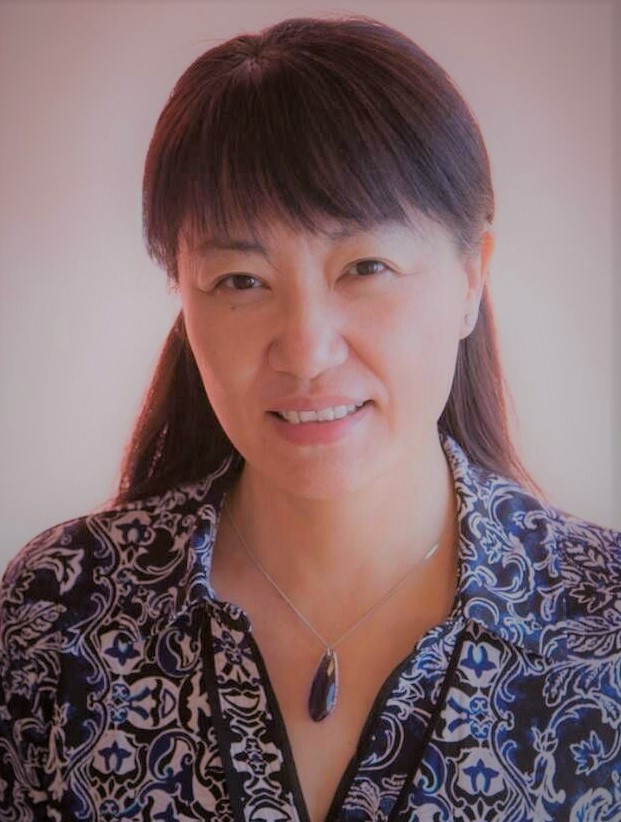
Rose Qingyang Hu (IEEE Distinguished Lecturer)
Professor, Utah State University, USA
Title: Downlink and Uplink Non-Orthogonal Multiple Access in a Dense Wireless Network
Time: 17:00 - 17:30, Thursday, February 21, 2019
Abstract:
To address the ever increasing high data rate and connectivity requirements in the next generation 5G wireless network, novel radio access technologies (RATs) are actively explored to enhance the system spectral efficiency and connectivity. As a promising RAT for 5G cellular networks, non-orthogonal multiple access (NOMA) has attracted extensive research attentions. Compared with orthogonal multiple access (OMA) that has been widely applied in existing wireless communication systems, NOMA possesses the potential to further improve system spectral efficiency and connectivity capability. This talk focuses on the analytical frameworks for NOMA downlink and uplink multi-cell wireless systems that can be used to evaluate the system outage probability and average achievable rate. In the downlink NOMA system, two different NOMA group pairing schemes are considered, based on which theoretical results on outage and achievable data rates are derived. In the uplink NOMA, revised back-off power control scheme is applied and outage probability and per UE average achievable rate are derived. As wireless networks turn into more and more densely deployed, inter-cell interference has become a dominant capacity limiting factor but has not been addressed in most of the existing NOMA studies. In this paper a stochastic geometry approach is used to model a dense wireless system that supports NOMA on both uplink and downlink, based on which analytical results are derived either in pseudo-closed forms or succinct closed forms and are further validated by simulations. Numerical results demonstrate that NOMA can bring considerable system-wide performance gain compared to OMA on both uplink and downlink when properly designed.
Biography:
Prof. Rose Qingyang Hu is currently associate dean for research of College of Engineering and full professor of Electrical and Computer Engineering Department at Utah State University. She received her B.S. degree from University of Science and Technology of China, her M.S. degree from New York University, and her Ph.D. degree from the University of Kansas. Besides 10 years' academia research experience, Prof. Hu also has more than 10 years R&D experience with Nortel, Blackberry and Intel as technical manager, senior research scientist, and senior wireless system architect, actively participating in industrial 3G/4G technology development, standardization, system level simulation and performance evaluation. Her current research interests include next-generation wireless communications, wireless network design and optimization, Internet of Things, Cloud computing/Fog computing, multimedia QoS/QoE, wireless system modeling and performance analysis. She has published more than 200 papers in top IEEE journals and conferences and holds over 30 patents in her research areas. Prof. Hu is an IEEE Communications Society Distinguished Lecturer 2015-2018 and recipient of Best Paper Awards from IEEE Globecom 2012, IEEE ICC 2015, IEEE VTC Spring 2016, and IEEE ICC 2016. She served as Tchnology, IEEE Communications Magazine, IEEE Wireless Communications Magazine.
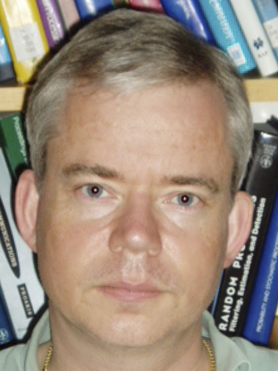
Anders Høst-Madsen (IEEE Fellow)
Professor, University of Hawaii, USA
Title: Description Length for Machine Learning and Data Discovery
Time: 16:00 - 16:30, Wednesday, February 20, 2019
Abstract:
Information theory provides various methodologies for quantifying information in data; one of these is description length. Description length is the minimum number of bits needed to describe an object, e.g., an image, or a collection of data. The description length can reveal interesting properties of data, for example if two objects are related. Description length takes into account complexity of models, thereby avoiding finding spurious relationships.
In the talk we will discuss how to define and find descriptive length, focusing on specific applications: data discovery, anomaly detection, and hyperparameter selection in machine learning. We show that description length is optimum for anomaly detection as well as having other important theoretical properties. We further show how description length is related to generalization error in machine learning. This is then used for hyperparameter optimization in deep learning, such as choosing model order and regularization parameters.
Traditionally, information theory has been used for communications. This talk shows that information theory is also a useful tool for data science.
Biography:
He was born in Denmark in 1966. He received the M.Sc. degree in electrical engineering in 1990 and the Ph.D. degree in mathematics in 1993, both from the Technical University of Denmark. From 1993 to 1996 he was with Dantec Dynamics, Copenhagen, Denmark, from 1996 to 1998 he was an assistant professor at Kwangju Institute of Science and Technology, Kwangju, Korea, and from 1998 to 2000 an assistant professor at Department of Electrical and Computer Engineering, University of Calgary, Calgary, AB, Canada, and a staff scientist at TRLabs, Calgary. Since 2001 he has been with the Department of Electrical Engineering, University of Hawaii at Manoa, Honolulu, as professor since 2009. He was also a founder and CTO of Kai Sensors, Inc., which is making equipment for non-contact heart monitoring. His research interests are in statistical signal processing, information theory, and wireless communications, including ad-hoc networks, cooperative diversity, wireless sensor networks, heart monitoring, and signal processing for underwater acoustics.
He is a Fellow of IEEE (2013), and has served as Editor for Multiuser Communications for the IEEE Transactions on Communications and as Associate Editor for Detection and Estimation for the IEEE Transactions on Information Theory. He received the Eurasip Journal of Wireless Communications and Networks (JWCN) best paper award in 2006. He is general co-chair of ISITA 2012 and IEEE ISIT 2014.
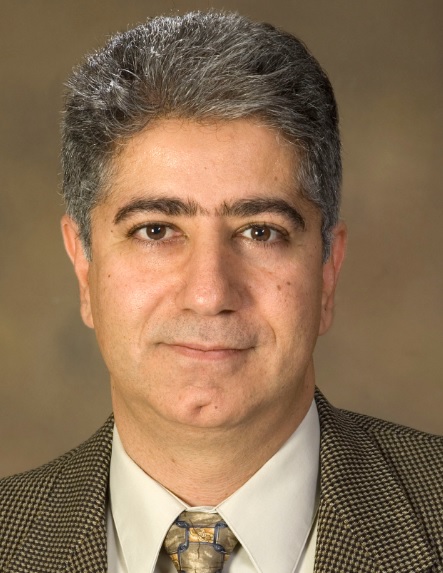
Marwan Krunz (IEEE Fellow)
Kenneth VonBehren Endowed Professor, University of Arizona, USA
Title: Network Discovery and Tracking in Directional Millimeter-Wave 5G Systems
Time: 16:00 - 16:30, Wednesday, February 20, 2019
Abstract:
5G+ wireless systems are expected to operate over millimeter-wave (mmW) spectrum, where communications are intrinsically directional and channels exhibit low (clustered) scattering with limited NLOS paths. At such frequencies, the base station (BS) needs to discover devices that enter its range and track them as they move within the BS range. The initial access and device/network discovery process must be performed within a strict time interval, often under unpredictable mobility. Tracking already discovered devices is yet another challenge, especially when sudden changes in the environment leads to disrupting the ongoing communications. Even at pedestrian speeds, significant beam misalignments and outage can occur. At higher speeds (e.g., drones, connected vehicles), beam misalignment can lead to disastrous outcomes. This talk will first discuss the challenges associated with device discovery and tracking in mmW-based 5G systems in highly mobile scenarios. Several potential solutions will then be presented and their limitations as well as complexity/performance tradeoff will be contrasted. Results from experimental mmW systems that use planar antenna arrays will be provided to showcase the potential of some of the proposed solutions.
Biography:
Marwan Krunz is the Kenneth VonBehren Endowed Professor in the Department of Electrical & Computer Engineering, the University of Arizona. He holds a joint appointment in the CS Department. Since April 2013, he has been the site co-director of the Broadband Wireless Access and Applications Center, a multi-university industry-focused NSF center that includes 5 university sites and 16+ industry affiliates. He received his Ph.D. degree in electrical engineering from Michigan State University in 1995. He joined the University of Arizona in January 1997, after a brief postdoctoral stint at the University of Maryland. In 2010, he was a Visiting Chair of Excellence at the University of Carlos III de Madrid. He previously held other visiting research positions at INRIA-Sophia Antipolis, HP Labs, University of Paris VI, University of Paris V, University of Jordan, and US West Advanced Technologies. Dr. Krunz’s research interests lie in the areas of wireless communications and networking, with emphasis on resource management, adaptive protocols, and security issues. He has published more than 250 journal articles and peer-reviewed conference papers, and is a co-inventor on several US patents. M. Krunz is an IEEE Fellow, an Arizona Engineering Faculty Fellow (2011-2014), and an IEEE Communications Society Distinguished Lecturer (2013 and 2014). He was the recipient of the 2012 IEEE TCCC Outstanding Service Award. He received the NSF CAREER award in 1998.
He currently serves as the Editor-in-Chief for the IEEE Transactions on Mobile Computing (TMC), one of the top-tier journals in the field of wireless and mobile computing. He also serves on the editorial board for the IEEE Transactions on Cognitive Communications and Networking. Previously, he served on the editorial boards for the IEEE/ACM Transactions on Networking, the IEEE Transactions on Mobile Computing, the IEEE Transactions on Network and Service Management, Computer Communications Journal, and the IEEE Communications Interactive Magazine. He was the general vice-chair for WiOpt 2016, TPC chair (Networking Track) for WCNC 2016, general co-chair for WiSec’12, TPC chair for INFOCOM’04, TPC co-chair for SECON’05, TPC co-chair for WoWMoM’06, and others. He was the keynote speaker, an invited panelist, and a tutorial presenter at numerous international conferences.
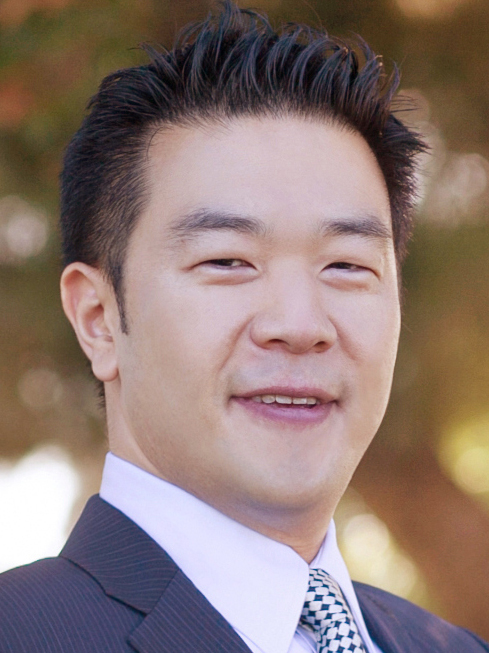
Sung-Ju Lee (IEEE Fellow)
School of Computing at KAIST, Korea.
Title: Use MU-MIMO at your own risk — Why we don’t get Gb/s Wi-Fi
Time: 16:30 - 17:00, Wednesday, February 20, 2019
Abstract:
With the ever growing popularity of mobile devices, the demand for wireless bandwidth has also increased, with the mobile users now expecting wireless network quality similar to what they experience with wired networks. Wireless LANs have evolved over the last twenty years, with major breakthrough technologies such as OFDM (Orthogonal Frequency Division Multiplexing), MIMO (Multiple Input Multiple Output), and MU (Multi-User)-MIMO. The latest IEEE 802.11ac standard supports up to 6.9 Gb/s theoretical capacity, but it could only be achieved with 8-streams in a “perfect” environment. Commercial 802.11ac wave-2 APs that include MU-MIMO capability, have only recently been made available in the market. We deployed a few APs from different vendors (that uses chipsets from different vendors) in various office environments and measured user throughput on smartphone mobile devices. We observe an enormous gap between theory and practice, with MU-MIMO often providing less throughput than SU (Single User)-MIMO in various network environments. We analyze the root cause of performance issues and suggest future research directions to achieve Gb/s Wi-Fi in practical deployments.
Biography:
Sung-Ju Lee received his PhD in Computer Science from the University of California, Los Angeles (UCLA) in 2000. He spent 12.5 years at Hewlett-Packard Company as a Principal Research Scientist and Distinguished Mobility Architect. He was then a Principal Member of Technical Staff at the CTO Office of Narus, Inc (now part of Symantec). In 2015, he joined the faculty of the School of Computing at KAIST where he is a KAIST Endowed Chair Professor and leads the Networking & Mobile Systems Lab. Dr. Lee has published over 100 technical papers in peer-reviewed journals and conferences. His papers are well-cited, with his publications receiving a total of over 13,000 citations and his h-index is 47, according to Google Scholar. In addition, he has 47 granted US patents. He won the HP CEO Innovation Award in 2010 that recognizes the people behind the most innovative products that HP has brought to market and the winners are nominated by executives in HP businesses. He is also the winner of the test-of-time paper award at ACM WiNTECH 2016 and the best paper award at IEEE ICDCS 2015. He is a co-founder and steering committee member of IEEE SECON. He is an IEEE Fellow and an ACM Distinguished Scientist.
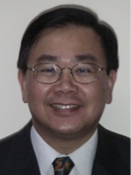
Victor C.M. Leung (IEEE/RSC/EIC/CAE Fellow)
TELUS Mobility Research Chair Professor, The University of British Columbia, Canada
Title: Integrated Networking, Caching and Computing: A Big Data Deep Reinforcement Learning Approach
Time: 17:00 - 17:30, Wednesday, February 20, 2019
Abstract:
Advances in information and communications technologies have fueled a plethora of innovations in networking, caching, and computing, which are called upon to work together to enable better and more efficient services. In the area of networking, software-defined networking (SDN) has attracted great interests from both academia and industry. Another new technology called information-centric networking (ICN) has been extensively studied in recent years. As a new paradigm in computing, fog/edge computing has been proposed to deploy computing resources closer to end devices. In this talk, we will present an integrated framework that can enable dynamic orchestration of networking, caching and computing resources to improve the end-to-end system performance. As the complexity of the system is very high, we further present a big data deep reinforcement learning approach. Future research challenges will be discussed as well.
Biography:
Victor C. M. Leung is a Professor and the holder of the TELUS Mobility
Research Chair in Advanced Telecommunications Engineering in the Department of
Electrical and Computer Engineering, the University of British Columbia. His
research interests are in the areas of wireless networks and mobile systems. He
has co-authored more than 1000 technical papers in international journals and
conference proceedings, and edited several books in these areas. Several of his
papers have been selected for best paper awards.
Dr. Leung is a registered professional engineer in the Province of British Columbia, Canada. He is a Fellow of IEEE, the Royal Society of Canada, the Engineering Institute of Canada, and the Canadian Academy of Engineering. He was a Distinguished Lecturer of the IEEE Communications Society. He has served on the editorial boards of the IEEE Journal on Selected Areas in Communications, the IEEE Transactions on Computers, Wireless Communications, and Vehicular Technology, the IEEE Wireless Communications Letters, and currently serves on the editorial boards of the IEEE Transactions on Cloud Computing, and Green Communications and Networking, as well as several other journals. He has guest-edited many journal special issues, and served on the technical program committees and organizing committees of numerous international conferences. Dr. Leung is a winner of the IEEE Vancouver Section Centennial Award, the 2011 UBC Killam Research Prize, and the 2017 Canadian Award for Telecommunications Research. He co-authored papers that won the 2017 IEEE ComSoc Fred W. Ellersick Prize and the 2017 IEEE Systems Journal Best Paper Award.
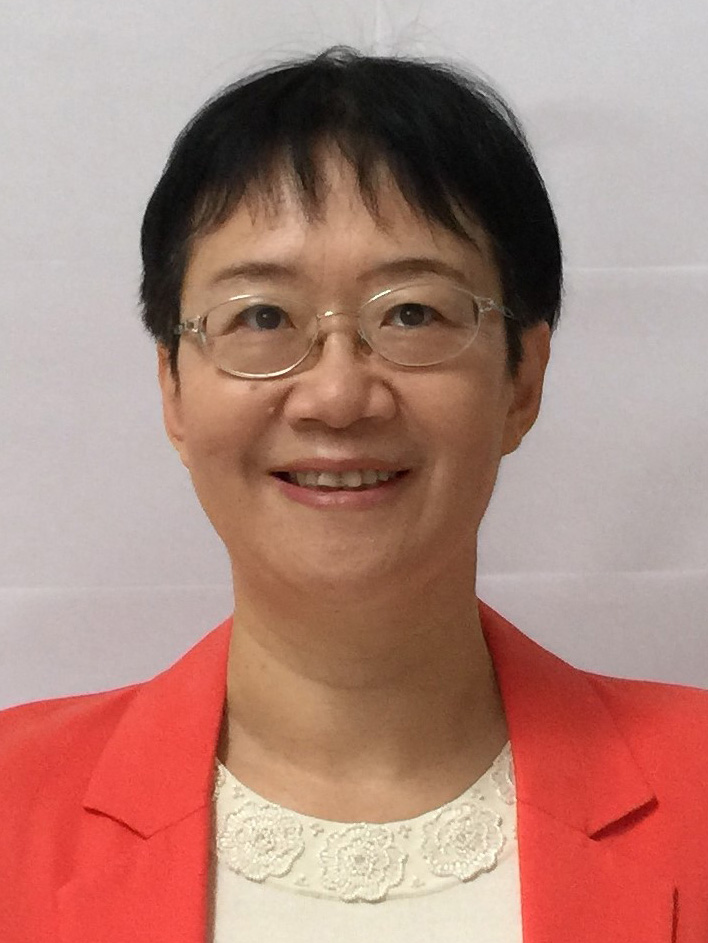
Ling Liu (IEEE Fellow)
Professor, Georgia Institute of Technology, USA.
Title: Trust and Privacy of Deep Learning in Adversarial Settings
Time: 17:30 - 18:00, Tuesday, February 19, 2019
Abstract:
We are entering an exciting era where human intelligence is being enhanced by machine intelligence through big data fueled artificial intelligence (AI) and machine learning (ML). However, recent work shows that prediction models trained privately are vulnerable to adversarial examples and privacy invasion, both of which turn AI and ML against itself through inference attacks and both maliciously manipulate the prediction outputs with only a black box access to a machine learning as a service API. We argue that the trustworthiness should be an essential and mandatory component of a deep learning system for algorithmic decision making. This includes (1) the understanding and the measurement of the level of trust and/or distrust that we place on a deep learning algorithm to perform reliably and truthfully, and (2) the development of formal metrics to formally and quantitatively evaluate and measure the trust level of an algorithmic decision making result by examining the trustworthiness of the algorithm with respect of intentional and unintentional effects of execution, in the presence of different adversarial settings. In this talk, I will share some of our empirical results and characterization on trust and privacy of deep learning in adversarial settings.
Biography:
Prof. Dr. Ling Liu is a Professor in the School of Computer Science at Georgia Institute of Technology. She directs the research programs in Distributed Data Intensive Systems Lab (DiSL), examining various aspects of large-scale data intensive systems. Prof. Liu is an internationally recognized expert in the areas of Big Data Systems and Analytics, Distributed Systems, Database and Storage Systems, Internet Computing, Privacy, Security and Trust. Prof. Liu has published over 300 international journal and conference articles, and is a recipient of the best paper award from a number of top venues, including ICDCS 2003, WWW 2004, 2005 Pat Goldberg Memorial Best Paper Award, IEEE CLOUD 2012, IEEE ICWS 2013, ACM/IEEE CCGrid 2015, IEEE Edge 2017. Prof. Liu is an elected IEEE Fellow and a recipient of IEEE Computer Society Technical Achievement Award. Prof. Liu has served as general chair and PC chairs of numerous IEEE and ACM conferences in the fields of big data, cloud computing, data engineering, distributed computing, very large databases, World Wide Web, and served as the editor in chief of IEEE Transactions on Services Computing from 2013-2016. Currently Prof. Liu is co-PC chair of The Web 2019 (WWW 2019). Prof. Liu’s research is primarily sponsored by NSF, IBM and Intel.
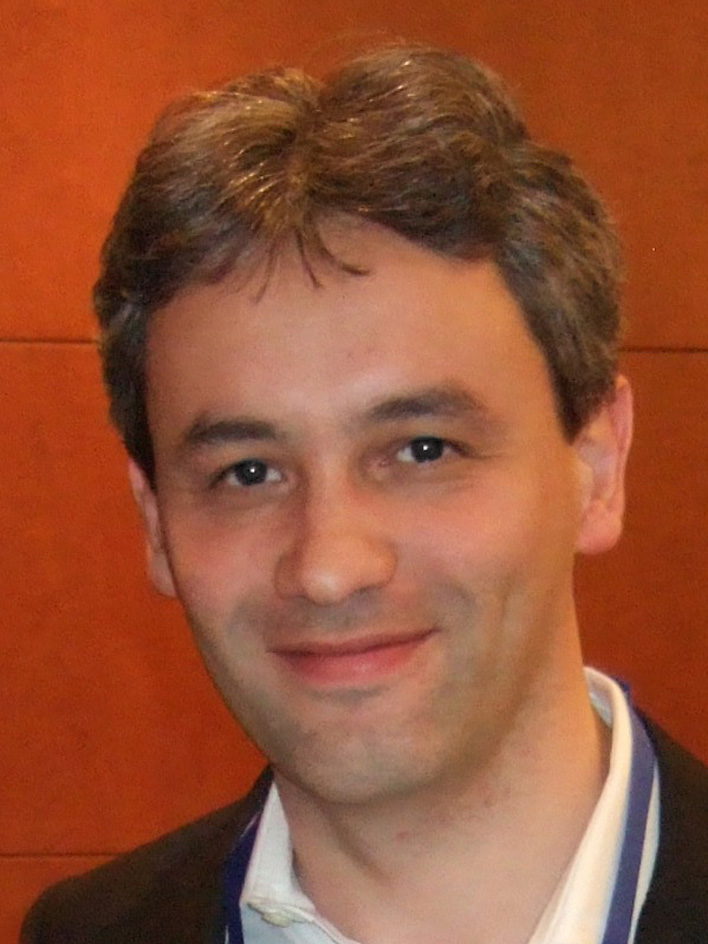
Tommaso Melodia (IEEE Fellow)
William Lincoln Smith Professor, Northeastern University, USA
Title: Toward a unified framework for wireless network slicing
Time: 17:00 - 17:30, Tuesday, February 19, 2019
Abstract:
The notions of softwarization and virtualization of the radio access
network (RAN) of next-generation (5G) wireless systems are ushering in
a vision where applications and services are physically decoupled from
devices and network infrastructure. This crucial aspect will
ultimately enable the dynamic deployment of heterogeneous services by
different network operators over the same physical infrastructure. In
this talk, we discuss a mathematical framework to formalize the RAN
slicing and the RAN slicing enforcement problem and demonstrate their
NP-hardness, as well as design and evaluate experimentally
approximation algorithms that render the solution scalable as the
problems increases in size.
Biography:
Tommaso Melodia is the William Lincoln Smith Professor with the Department of Electrical and Computer Engineering and College of Engineering Faculty Fellow at Northeastern University in Boston. He received his Ph.D. in Electrical and Computer Engineering from the Georgia Institute of Technology in 2007. He is an IEEE Fellow, a recipient of the National Science Foundation CAREER award and of the 2018 Søren Buus Outstanding Research Award.
He is the Director of Research for the PAWR Project Office, a $100M public-private partnership to establish 4 city-scale platforms for wireless research to advance the US wireless ecosystem in years to come. He was the Technical Program Committee Chair for IEEE Infocom 2018, and serves in the Editorial Boards of IEEE Transactions on Mobile Computing and IEEE Transactions on Biological, Molecular, and Multi-Scale Communications. His research on modeling, optimization, and experimental evaluation of Internet-of-Things and wireless networked systems is funded by the National Science Foundation, the Office of Naval Research, the Air Force Research Laboratory, DARPA, and the Army Research Laboratory.
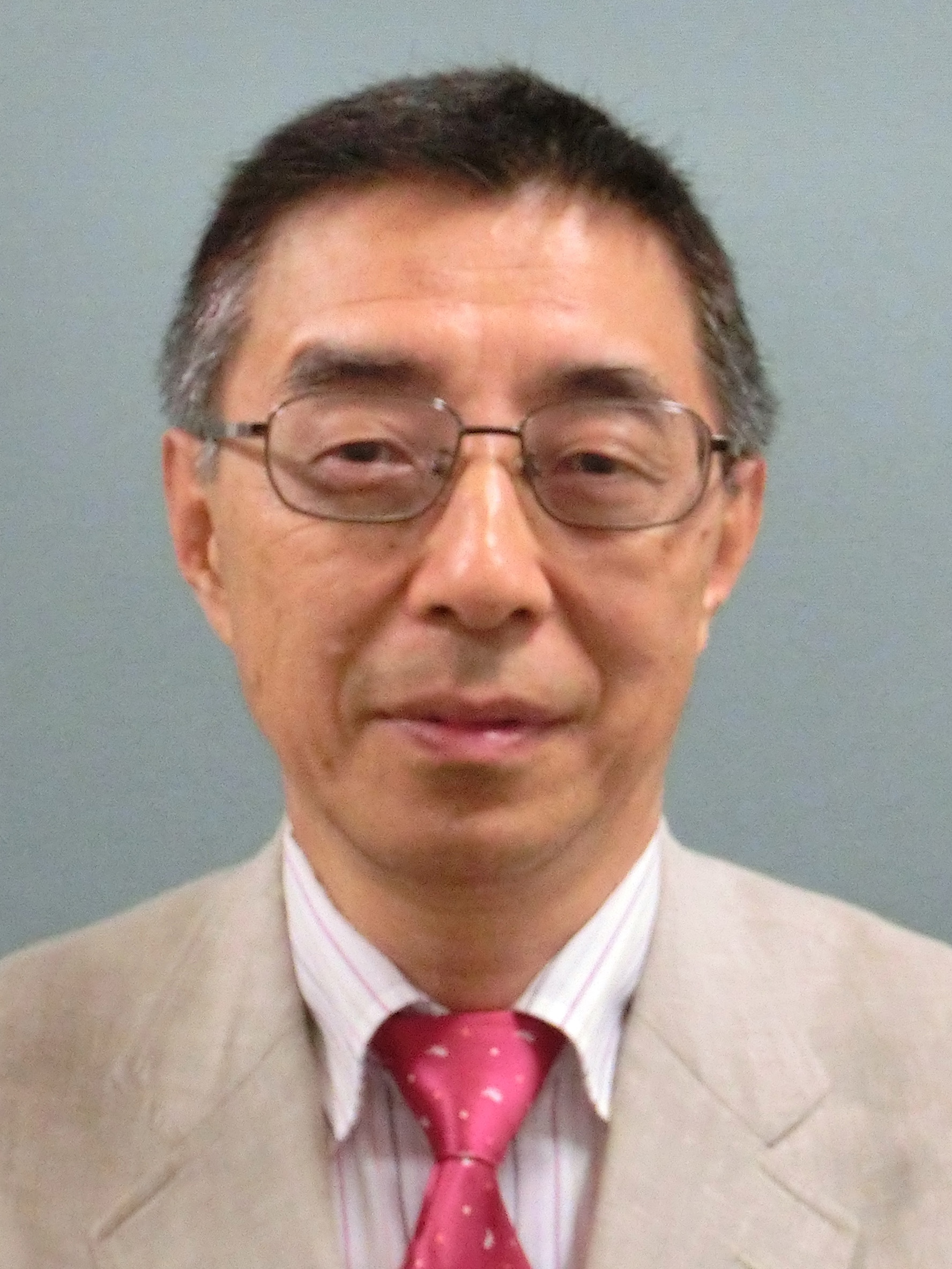
Takehiro Moriya (IEEE IEICE NTT Fellow)
Head of Moriya Research Lab, NTT Communication Science Labs, Japan
Title: Progress in speech and audio coding technologies
Time: 16:30 - 17:00, Wesnesday, February 20, 2019
Abstract:
Progress in speech and audio coding technologies over 50 years is reviewed and the latest standardized coding schemes are introduced. Low rate speech coding schemes for mobile phones are commonly based on time domain LPC (Linear Predictive Coding). In contrast, audio coding schemes, which allow longer coding delay for broadcasting, portable player and storage applications, have been based on frequency domain compression technologies. Recently, however, LPC has come to be commonly used for all types of coding schemes, because of various market needs, such as a low bitrate and unified speech and audio coding, and lossless coding. In line with this trend, two new standardized coding schemes are introduced. One is a simple and flexible audio lossless coding standard, MPEG-4 ALS (Audio Lossless) for high quality digital broadcasting and delivery. The other is a low bit rate and super wide band speech and audio coding standard, 3GPP EVS (Enhanced Voice Services) for VoLTE (Voice over LTE).
Biography:
Takehiro Moriya received the B.S., M.S., and Ph.D. degrees in mathematical engineering and instrumentation physics from the University of Tokyo, in 1978, 1980, and 1989, respectively. Since joining NTT laboratories in 1980, he has been engaged in research on medium to low bit rate speech and audio coding. In 1989, he worked at AT&T Bell Laboratories as a Visiting Researcher. Since 1990 he has contributed to the standardization of coding schemes for the Japanese cellular phone, ITU-T, ISO/IEC MPEG, and 3GPP. His many inventions include the pitch synchronous innovation scheme and the conjugate vector quantization. Both have been adopted to PSI-CELP (Pitch Synchronous Innovation Code Excited LP) in the Half-rate Japanese Public Digital Cellular phone standard and to CS-ACELP (Conjugate Structure Algebraic CELP) in ITU-T G.729 standard. His team also made a principal leadership in establishing MPEG audio lossless coding (ALS), and contributed to establish 3GPP EVS.
He is a member of the Speech and Language processing Technical Committee of the IEEE Signal Processing Society. He and his colleagues have published over 200 journal or major conference papers, 16 book contributions, 80 families of international patents and 320 families of Japanese patents. He received many awards, including the purple ribbon award from Japanese government in 2010, Distinguished Achievement and Contributions Award from IEICE Japan in 2012, and IEEE James L. Flanagan Speech and Audio Processing Award in 2016.
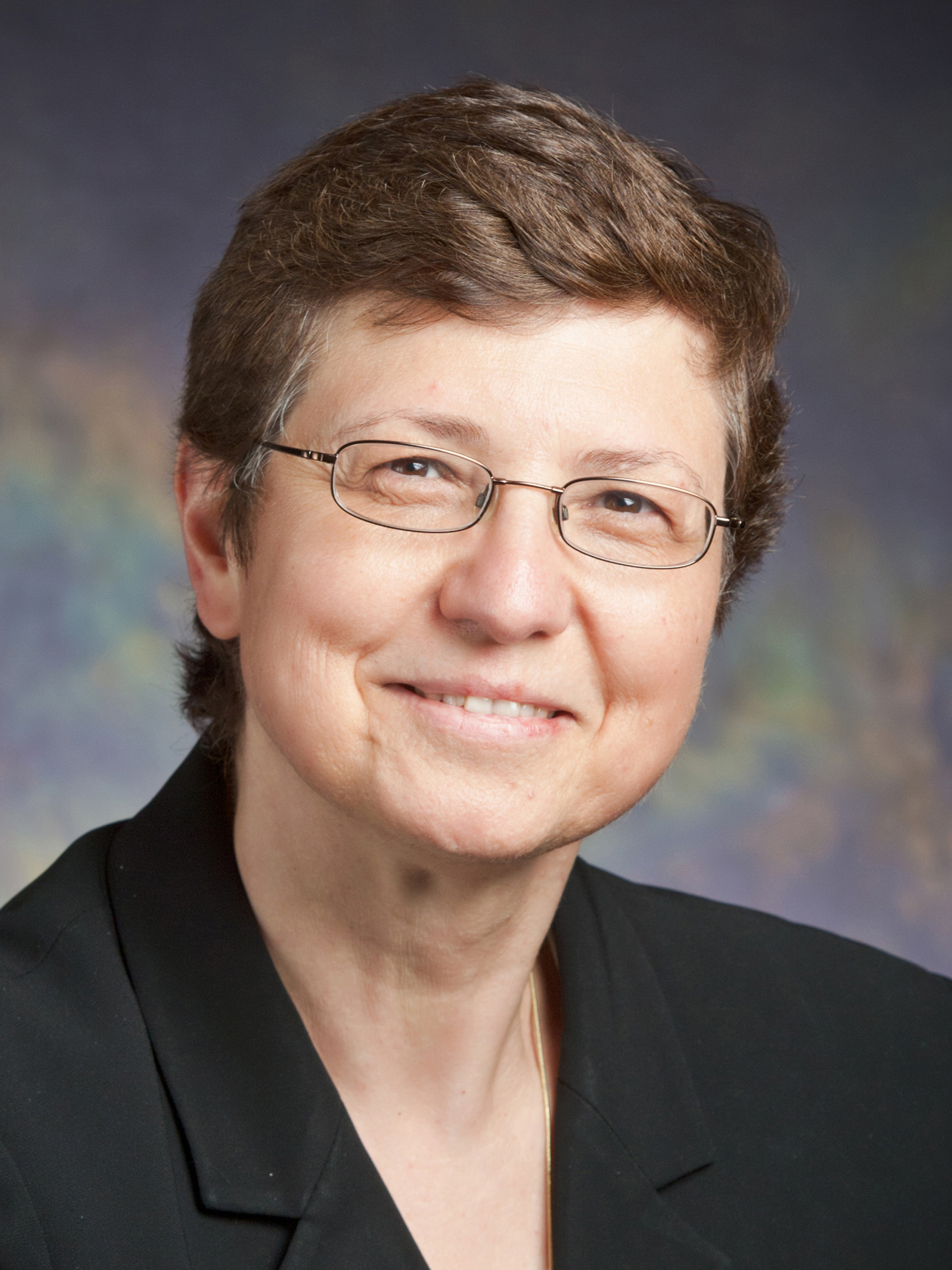
Klara Nahrstedt (IEEE/ACM Fellow, Member of the German NAS)
Ralph and Catherine Fisher Professor, University of Illinois at Urbana-Champaign, USA.
Title: BRACELET: Edge-Cloud Microservice Infrastructure for Aging Scientific Instruments
Time: 16:30 - 17:00, Thursday, February 21, 2019
Abstract:
Recent advances in cyber-infrastructure have enabled digital data sharing and ubiquitous network connectivity between scientific instruments and cloud-based storage infrastructure for uploading, storing, curating, and correlating of large amounts of materials and semiconductor fabrication data and metadata. However, there is still a significant number of scientific instruments running on old operating systems that are taken offline and cannot connect to the cloud infrastructure, due to security and network performance concerns. In this talk, we discuss BRACELET - an edge-cloud infrastructure that augments the existing cloud-based infrastructure with edge devices and helps to tackle the unique performance&security challenges that scientific instruments face when they are connected to the cloud through public network. With BRACELET, we put a networked edge device, called cloudlet, in between the scientific instruments and the cloud as the middle tier of a three-tier hierarchy. The cloudlet will shape and protect the data traffic from scientific instruments to the cloud, and will play a foundational role in keeping the instruments connected throughout its lifetime, and continuously providing the otherwise missing performance and security features for the instrument as its operating system ages.
Biography:
Klara Nahrstedt is the Ralph and Catherine Fisher Professor in the Computer Science Department, and Director of Coordinated Science Laboratory in the College of Engineering at the University of Illinois at Urbana-Champaign. Her research interests are directed toward tele-immersive systems, end-to-end Quality of Service (QoS) and resource management in large scale distributed systems and networks, and real-time security and privacy in cyber-physical systems such as power grid. She is the co-author of multimedia books `Multimedia: Computing, Communications and Applications' published by Prentice Hall, and ‘Multimedia Systems’ published by Springer Verlag. She is the recipient of the IEEE Communication Society Leonard Abraham Award for Research Achievements, University Scholar, Humboldt Award, IEEE Computer Society Technical Achievement Award, ACM SIGMM Technical Achievement Award, and the former chair of the ACM Special Interest Group in Multimedia. She was the general co-chair and TPC co-chair of many international conferences including ACM Multimedia, IEEE Percom, IEEE IOTDI and others. Klara Nahrstedt received her Diploma in Mathematics from Humboldt University, Berlin, Germany in 1985. In 1995 she received her PhD from the University of Pennsylvania in the Department of Computer and Information Science. She is ACM Fellow, IEEE Fellow, and Member of the German National Academy of Sciences (Leopoldina Society).
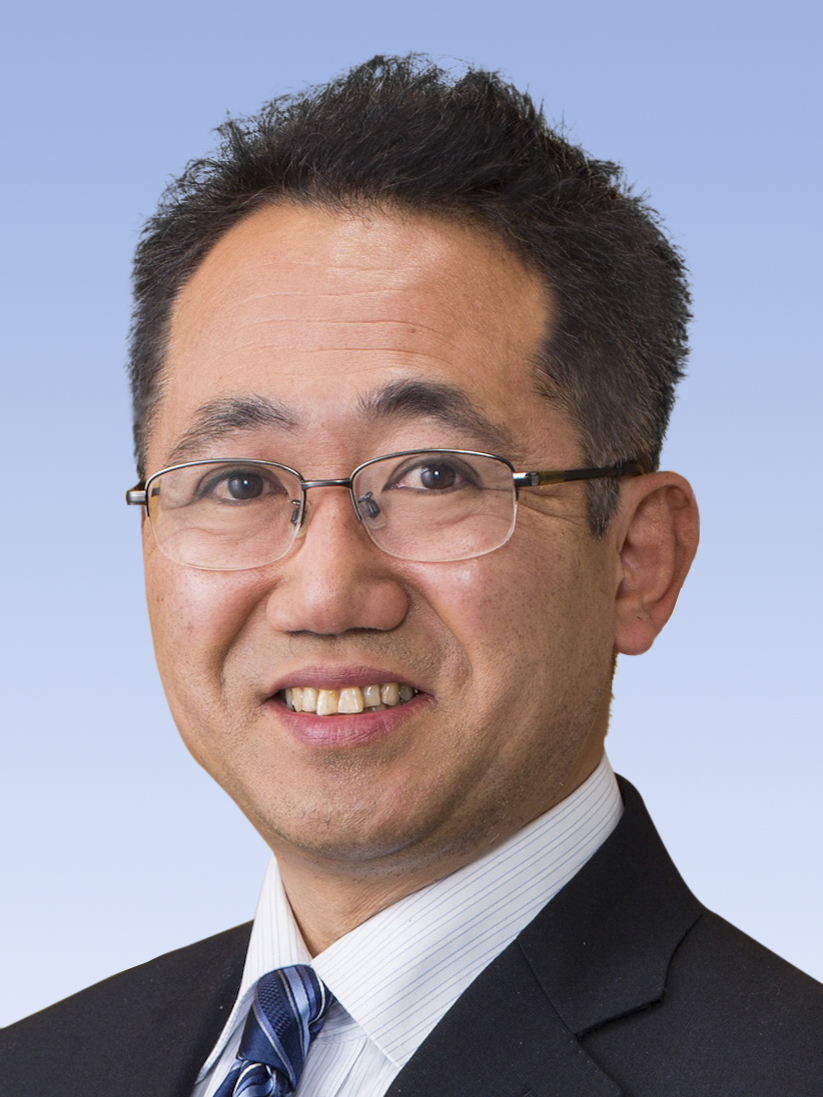
Eiji Oki (IEEE/IEICE Fellow)
Professor, Kyoto University, Japan
Title: Resource Allocation Model for Probabilistic Protection in Cloud Provider
Time: 17:30 - 18:00, Tuesday, February 19, 2019
Abstract:
Cloud computing, which provides resources and services to users through the Internet, is used in various fields. An infrastructure as a service (IaaS) provider allocates virtual machines in physical machines to customers to meet their requests. The availability of cloud providers is increasingly concerned. There are several failures across the physical machines in cloud providers over the past few years, even for some high-profile cloud providers. This talk presents a cost-effective backup resource allocation model that provides a probabilistic protection for primary physical machines in a cloud provider, and introduces a prototype system to implement the model.
Biography:
Eiji Oki is a Professor at Kyoto University, Kyoto, Japan. He received the B.E. and M.E. degrees in instrumentation engineering and a Ph.D. degree in electrical engineering from Keio University, Yokohama, Japan, in 1991, 1993, and 1999, respectively. In 1993, he joined Nippon Telegraph and Telephone Corporation (NTT) Communication Switching Laboratories, Tokyo, Japan. He has been researching network design and control, traffic-control methods, and high-speed switching systems. From 2000 to 2001, he was a Visiting Scholar at the Polytechnic Institute of New York University, Brooklyn, New York, where he was involved in designing terabit switch/router systems. He was engaged in researching and developing high-speed optical IP backbone networks with NTT Laboratories. He was with The University of Electro-Communications, Tokyo, Japan from July 2008 to February 2017. He joined Kyoto University, Japan in March 2017. He has been active in the standardization of the path computation element (PCE) and GMPLS in the IETF. He wrote more than ten IETF RFCs. Prof. Oki was the recipient of several prestigious awards, including the 1998 Switching System Research Award and the 1999 Excellent Paper Award presented by IEICE, the 2001 Asia-Pacific Outstanding Young Researcher Award presented by IEEE Communications Society for his contributions to broadband network, ATM, and optical IP technologies, the 2010 Telecom System Technology Prize by the Telecommunications Advanced Foundation, IEEE HPSR 2012 Outstanding Paper Award, IEEE HPSR 2014 Best Paper Award Finalist, First Runner Up, and the 2015 IEICE Achievement Award. He has authored/co-authored four books, Broadband Packet Switching Technologies, published by John Wiley, New York, in 2001, GMPLS Technologies, published by CRC Press, Boca Raton, FL, in 2005, Advanced Internet Protocols, Services, and Applications, published by Wiley, New York, in 2012, and Linear Programming and Algorithms for Communication Networks, CRC Press, Boca Raton, FL, in 2012. He is a Fellow of IEEE and IEICE.
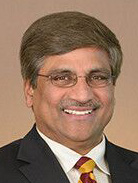
Sethuraman Panchanathan (IEEE Fellow)
Professor, Arizona State University, USA.
Title: Person-Centric Multimedia Computing: Technology Inspirations Drawn from Needs of Individuals with Disabilities with Impacts to the Broader Population
Time: 13:30 - 14:00, Thursday, February 21, 2019
Abstract:
The era of ubiquitous computing has yielded technology that is highly aware of the unique attributes of its users. However, while the Human-Centered Multimedia Computing (HCMC) paradigm can capture these attributes among broad populations, interpersonal and intrapersonal variations call for a more modern approach, particularly in the realm of disability wherein these variations can have tremendous impact on the user experience. The Person-Centric Multimedia Computing (PCMC) paradigm is a novel approach to human-computer interaction in which technology is shaped from the ground up to account for the explicit needs, challenges, and attributes of an individual while utilizing adaptive techniques to maintain applicability among the broader population. As proofs of concept for PCMC in real person-centric problem domains, two example applications are considered: the Social Interaction Assistant, an assistive technology aimed at enhancing social interactions for individuals with blindness and visual impairment; and the Autonomous Training Assistant, a training tool which utilizes serious games and automated assessment to assist with at-home upper-extremity rehabilitation.
Biography:
Sethuraman "Panch" Panchanathan leads the knowledge enterprise development at Arizona State University, which advances research, innovation, strategic partnerships, entrepreneurship, global and economic development at ASU.Panchanathan was the founding director of the School of Computing and Informatics and was instrumental in founding the Biomedical Informatics Department at ASU. He also served as the chair of the Computer Science and Engineering Department. He founded the Center for Cognitive Ubiquitous Computing (CUbiC) at ASU. CUbiC’s flagship project iCARE, for individuals who are blind and visually impaired, won the Governor’s Innovator of the Year-Academia Award in November 2004.
In 2014, Panchanathan was appointed by President Barack Obama to the U.S. National Science Board (NSB) and is Chair of the Committee on Strategy. He was appointed by former U.S. Secretary of Commerce Penny Pritzker to the National Advisory Council on Innovation and Entrepreneurship (NACIE).
Panchanathan is a Fellow of the National Academy of Inventors (NAI), the American Association for the Advancement of Science (AAAS) and the Canadian Academy of Engineering. He is also Fellow of the Institute of Electrical and Electronics Engineers (IEEE), and the Society of Optical Engineering (SPIE). He is currently serving as the Chair of the Council on Research (CoR) within the Association of Public and Land-grant Universities (APLU). Panchanathan was the editor-in-chief of the IEEE Multimedia Magazine and is also an editor/associate editor of many other journals and transactions.
Panchanathan’s research interests are in the areas of human-centered multimedia computing, haptic user interfaces, person-centered tools and ubiquitous computing technologies for enhancing the quality of life for individuals with disabilities, machine learning for multimedia applications, medical image processing, and media processor designs. Panchanathan has published over 440 papers in refereed journals and conferences and has mentored over 100 graduate students, post-docs, research engineers and research scientists who occupy leading positions in academia and industry. He has been a chair of many conferences, program committee member of numerous conferences, organizer of special sessions in several conferences and an invited speaker, panel member in conferences, universities and industry.
Panchanathan holds a PhD in electrical and computer engineering from the University of Ottawa in Canada; an MTech in electrical engineering from the Indian Institute of Technology, Madras; a BE in electronics and communication engineering from the Indian Institute of Science, Bangalore; and a BSc in physics from the University of Madras in India.

Panos Nasiopoulos (IEEE/CAE Fellow)
Professor, University of British Columbia, Canada
Title: An in-depth look at light field technology – compression and access of information
Time: 14:00 - 14:30, Thursday, February 21, 2019
Abstract:
Light Field (LF) Technology is the latest emerging innovation in digital media, seeing as an “upgrade” to the way optical devices take in light, with the potential to revolutionize the way we view and deliver real-life while promising more realistic Virtual and Augmented Reality applications. In contrast with a conventional camera, which records only light intensity, LF includes the intensity of light in a scene and the direction that the light rays are traveling in space, with every pixel having color and directional properties and its exact placement in space. The result is a plethora of captured information with excessive storage, bandwidth and processing requirements. Considering LF technology benefits come with an exponential increase in the amount of data required as well as the complexity of view access, the need for efficient compression and acceptable random access performance is essential. We will discuss the challenges in designing capturing schemes for light field content and the compression schemes for light field content that address the processing and access requirements for different applications.
Biography:
Dr. Panos Nasiopoulos is a professor with the Department of Electrical and Computer Engineering and the former Director of the Institute for Computing, Information and Cognitive Systems and the Master of Software Systems at UBC. Before joining UBC, he was the President of Daikin Comtec US (co-founder of DVD) and Executive Vice President of Sonic Solutions. His research interests are primarily in the area of Digital Video Processing and Coding, he is the author or the co-author of numerous research publications and patents. He is a registered member of the Association of Professional Engineers and Geoscientists of British Columbia (APEGBC), a Fellow of IEEE, a Fellow of the Canadian Academy of Engineering, and has been an active member of the Standards Council of Canada, MPEG, JPEG, SMPTE and IEEE.
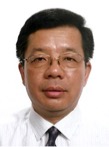
Yi Qian (IEEE Distinguished Lecturer)
Professor, University of Nebraska-Lincoln, USA.
Title: Authentications in 5G Wireless Security
Time: 14:00 - 14:30, Thursday, February 21, 2019
Abstract:
Wireless communication technologies are ubiquitous nowadays. Most of the smart devices have Cellular, Wi-Fi, Bluetooth connections. These technologies have been developed for many years, nonetheless they are still being enhanced. More development can be expected in the next few years, such as faster transmission data rate, more efficient spectrum usage, lower power consumption, etc. Similarly, cellular networks have been evolved for several generations. For example, GSM as part of 2G family, UMTS as part of the 3G family, and LTE as part of 4G family. In the next few years, 5G wireless network systems will continue the evolution to keep up with the fast-growing needs of customers. Secure wireless communications will certainly be part of other advances in the industry such as multimedia streaming, data storage and sharing in clouds, mobile cloud computing services, etc. This talk covers the topics on authentications in next generation wireless network security, with focusing on 5G wireless network systems, followed by a discussion on the challenges and open research issues in the area.
Biography:
Yi Qian received a Ph.D. degree in electrical engineering from Clemson University. He is a professor in the Department of Electrical and Computer Engineering, University of Nebraska-Lincoln (UNL). Prior to joining UNL, he worked in the telecommunications industry, academia, and the government. Some of his previous professional positions include serving as a senior member of scientific staff and a technical advisor at Nortel Networks, a senior systems engineer and a technical advisor at several start-up companies, an assistant professor at University of Puerto Rico at Mayaguez, and a senior researcher at National Institute of Standards and Technology. His research interests include information assurance and network security, network design, network modeling, simulation and performance analysis for next generation wireless networks, wireless ad-hoc and sensor networks, vehicular networks, smart grid communication networks, broadband satellite networks, optical networks, high-speed networks and the Internet. Prof. Yi Qian is a member of ACM and a senior member of IEEE. He was the Chair of IEEE Communications Society Technical Committee for Communications and Information Security. He was the Technical Program Chair for IEEE International Conference on Communications (ICC) 2018. He is a Distinguished Lecturer for IEEE Vehicular Technology Society and IEEE Communications Society. He is serving on the editorial boards for several international journals and magazines, including serving as the Editor-in-Chief for IEEE Wireless Communications Magazine.
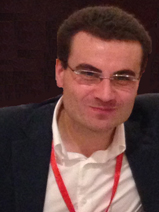
Marco DI Renzo
CNRS Associate Professor, Univ Paris Sud, Paris, France
Title: Communication Networks Design: Model-Based, Data-Driven, or Both?
Time: 17:30 - 18:00, Tuesday, February 19, 2019
Abstract:
Recently, deep learning has received significant attention as a technique to design and optimize wireless communication systems and networks. The usual approach to use deep learning consists of acquiring large amount of empirical data about the system behavior and employ it for performance optimization (data-driven approach). We believe, however, that the application of deep learning to communication networks design and optimization offers more possibilities. As opposed to other fields of science, such as image classification and speech recognition, mathematical models for communication networks optimization are very often available, even though they may be simplified and inaccurate. We believe that this a priori expert knowledge, which has been acquired over decades of intense research, cannot be dismissed and ignored. In the present work, in particular, we put forth a new approach that capitalizes on the availability of (possibly simplified or inaccurate) theoretical models, in order to reduce the amount of empirical data to use and the complexity of training artificial neural networks (ANNs). We concretely show, with the aid of some examples, that synergistically combining prior expert knowledge based on analytical models and data-driven methods constitutes a suitable approach towards the design and optimization of communication systems and networks with the aid of deep learning based on ANNs.
Biography:
Marco DI RENZO was born in L'Aquila, Italy, in 1978. He received the
Laurea (cum laude) and Ph.D. degrees in electrical engineering from the
University of L'Aquila, Italy, in 2003 and 2007, respectively, and the
Habilitation à Diriger des Recherches (Doctor of Science) degree from
University Paris-Sud, France, in 2013. Since 2010, he has been a Chargé de
Recherche CNRS (CNRS Associate Professor) in the Laboratory of Signals and
Systems (L2S) of Paris-Saclay University - CNRS, CentraleSupélec, Univ Paris
Sud, Paris, France. He serves as the Associate Editor-in-Chief of IEEE
Communications Letters, and as an Editor of IEEE Transactions on
Communications, and IEEE Transactions on Wireless Communications. He is a
Distinguished Lecturer of the IEEE Vehicular Technology Society and IEEE
Communications Society, and a Senior Member of the IEEE. He is a recipient
of several awards, including the 2013 IEEE-COMSOC Best Young Researcher
Award for Europe, Middle East and Africa, the 2013 NoE-NEWCOM# Best Paper
Award, the 2014-2015 Royal Academy of Engineering Distinguished Visiting
Fellowship, the 2015 IEEE Jack Neubauer Memorial Best System Paper Award,
the 2015-2018 CNRS Award for Excellence in Research and Ph.D. Supervision,
the 2016 MSCA Global Fellowship (declined), the 2017 SEE-IEEE Alain Glavieux
Award, and 7 Best Paper Awards
at IEEE conferences (2012 and 2014 IEEE CAMAD, 2013 IEEE VTC-Fall, 2014 IEEE
ATC, 2015 IEEE ComManTel, 2017 IEEE SigTelCom, 2018 INISCOM).
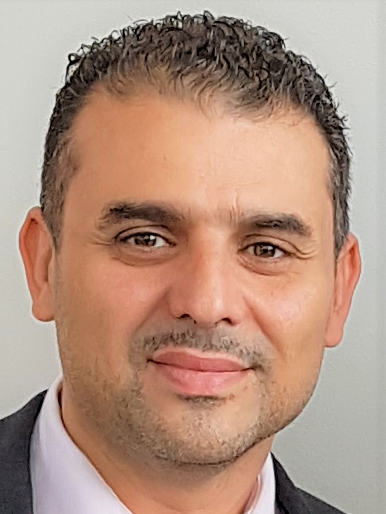
Abdulmotaleb El Saddik (IEEE/CAE Fellow)
Professor, University of Ottawa, Canada
Title: Digital Twin: The convergence of Multimedia Technologies
Time: 14:30 - 15:00, Thursday, February 21, 2019
Abstract:
A digital twin is a digital replication of a living or non-living physical entity. By bridging the physical and the virtual worlds, data is transmitted seamlessly allowing the virtual entity to exist simultaneously with the physical entity. A digital twin facilitates the means to monitor, understand, and optimize the functions of the physical entity and provides continuous feedback to improve quality of life and wellbeing. In this talk, we will discuss the convergence of multimedia technologies (AR/VR, AI, IoT, Wearables, BigMM Data and 5G-Tactile Internet ) towards the digital twin. We will conclude by describing the challenges and the open research questions.
Biography:
Abdulmotaleb El Saddik (M01 SM04 F09), is Distinguished Professor and University Research Chair in the School of Electrical Engineering and Computer Science at the University of Ottawa. He completed his Dipl-Ing. and Dr.-Ing. from the Technische Universität Darmstadt, Germany. He is the director of the Multimedia Communications research Laboratory and the Medical Devices Innovation Institute. Dr. El Saddik is an internationally-recognized scholar who has made strong contributions to the knowledge and understanding of multimedia computing, communications and applications. He is a leading haptics expert, with global recognition for his development of new technologies for real-time multisensory-based identification of humans (biometrics), synchronization of haptics, audio and visual data, Quality of Experience models for multisensory environments, and methods that dynamically compute the confidence levels of sensory data in a collaborative environment. His work looks toward the establishment of Digital Twins using AI, AR/VR and Tactile Internet that allow people to interact in real-time with one another as well as with their digital representation. He has been extremely productive of high-quality research and impact. He is the author of more than 500 peer-reviewed articles and five patents. He is the author of the book Haptics Technologies: Bringing Touch to Multimedia. Dr. El Saddik is a Fellow of the IEEE, the Canadian Academy of Engineering and the Engineering Institute of Canada. He received several awards, including the Friedrich Wilhelm Bessel Award from the German Humboldt Foundation and the IEEE Instrumentation and Measurement Society Technical Achievement Award. He also received IEEE Canada C.C. Gotlieb (Computer) Medal and A.G.L. McNaughton Gold Medal for important contributions to the field of computer engineering and science.

Title: From Millimeter-Wave to Quantum Communication: A Call for Cross-Disciplinary Research and Technology Innovation
Time: 17:30 - 18:00, Wednesday, February 20, 2019
Abstract:
Information science and technology is experiencing an explosive growth and unprecedented changes. On the one hand are the synergistic developments in optical and wireless communication networks and the proliferation of mobile and cloud computing. These developments are spawning new applications, including the Internet of Things, augmented and virtual reality, and autonomous vehicles, and imposing progressively stringent requirements on communication networks in terms of rate, latency, reliability and security. While innovations in communication and computing technologies will continue to advance information networks in the future, there is a growing sense that we are beginning to hit fundamental physical limits; e.g., the electromagnetic degrees of freedom for communication, and the density of integrated circuits for computation. On the other hand, a second information revolution is unfolding in parallel for exploiting fundamental quantum mechanical phenomena, e.g., “superposition” and “entanglement”, to manipulate information in ways that is not possible with existing “classical” technologies. The frontier of quantum information science and engineering promises to augment existing technologies and lead to radically new and disruptive paradigms for computing, communication and sensing. In this talk, I will highlight a few salient attributes that are shared by the emerging classical, quantum and hybrid information technologies and need to be exploited for fully harnessing their potential: i) cross-disciplinary research, ii) optical and photonic principles, techniques and technologies, iii) experimental testbed development, and iv) machine learning and artificial intelligence techniques.
Biography:
Akbar M. Sayeed is a Professor of Electrical and Computer Engineering at the University of Wisconsin-Madison and leads the Wireless Communications and Sensing Laboratory. He is currently also serving as a Program Director at the National Science Foundation (NSF) in the Communications, Circuits, and Sensing Systems (CCSS) Program of the Electrical, Communications and Cyber Systems (ECCS) Division of the Engineering Directorate. He received the B.S. degree from the UW-Madison, the M.S. and Ph.D. degrees from the University of Illinois and was a postdoctoral fellow at Rice University before joining UW-Madison. His research interests include wireless communications, channel modeling, statistical signal processing, communication and information theory, time-frequency analysis, machine learning, and applications. A current focus is the development of basic theory, system architectures, and testbeds for emerging wireless technologies, including millimeter-wave wireless and high-dimensional multi-antenna multiple input multiple output (MIMO) systems. He also led the creation of the NSF Research Coordination Network on Millimeter-Wave Wireless in October 2016. At the NSF, Dr. Sayeed’s program covers the basic science and engineering of sensing, processing, and communication of information in all modalities, including integrated design of hardware and algorithms for information processing systems. He is a member of the Working Groups of two of the 10 NSF Big Ideas: 1) The “Quantum Leap” WG - an NSF-wide effort for developing new cross-disciplinary initiatives for advancing quantum information science and engineering, and 2) The “Harnessing the Data Revolution” WG - an NSF-wide effort for developing new cross-disciplinary initiatives for advancing Data Science and Engineering.
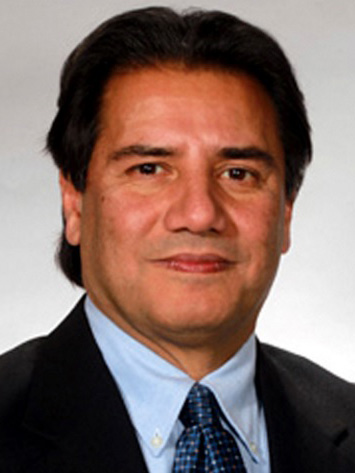
Title: High-Speed Wireless Communication Challenges for the Intelligent Rail Transportation System
Time: 14:30 - 15:00, Thursday, February 21, 2019
Abstract:
Advances in wireless communication technologies have enabled the Intelligent Transport System (ITS) applications for safer, more efficient, reliable and secure surface transportations covering auto and rail industries. In the automotive industry, the in-vehicle communications and inter-vehicle communications offer different wireless challenges.
For the rail environment, wireless communication plays a critical role in monitoring and controlling trains and railcars. The challenges are extensive including the linear topology of freight trains with over 100 railcars in a train’s consist, limited power/energy availability, and travelling different geographical areas which all require advanced wireless architectures and technologies to support time critical applications. The challenges in passenger trains are also broad including the high-speed train’s wireless communications with consideration of signal degradations due to the train’s high velocity.
This presentation will discuss research trends and challenges on different wireless architectures and technologies suitable for supporting wireless communications in different modes of rail transportation with time critical applications and data intensive traffic such as video streaming for rail environments.
Biography:
Dr. Sharif is the Charles J. Vranek Distinguished Professor in the Department of Electrical and Computer Engineering at the University of Nebraska-Lincoln (UNL). He is also the Director of the Advanced Telecommunications Engineering Laboratory at UNL.
Dr. Hamid Sharif has made significant contributions in the field of wireless communication for mobile and vehicular applications. His research work in this area over the last three decades has produced many significant advances with profound impacts on rail communications.
His work in vehicular communications includes contributions to developments of Advanced Train Control System (ATCS) communication protocol, the Remote Control Locomotive communication protocol, high-speed trackside wireless communication for freight railroads, as well as his most recent work on wireless communication to provide real-time railcar monitoring.
He has published over 350 research articles in international journals and conferences. He is an IEEE Fellow and currently the Distinguished Lecturer for the IEEE Vehicular Technology Society.
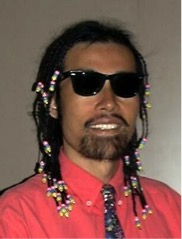
Akihiko K. Sugiyama (IEEE/IEICE Fellow)
Project Researcher, Yahoo! JAPAN Research, Yahoo Japan Corporation
Hearable devices: new directions with new functions:
Time: 16:00 - 16:30, Thursday, February 21, 2019
Abstract:
This talk presents new directions of hearable devices with new functions, namely personal authentication, inner-ear microphone, and an interface with new services. Personal authentication is performed by analyzing a reflection from the ear canal which exhibits different characteristics for each individual. An equal error rate of 0.97% is achieved with twelve feature components with a single second signal emission. An inaudible signal may be emitted in the ear for the comfort of the user. Inner-ear microphone is a promising replacement of standard microphones. The hearable device can be used for both an output and an input device which is more robust to environmental noise than ordinary microphones. For enhanced quality of the input signal, an adaptive noise canceller may be combined in adverse environments. Hearable devices can also accommodate a new signal processing function to replace the background signal. Such a function is useful for virtual/augmented reality (VR/AR) applications. Implementation of a personal authentications system on a smartphone and an inner-ear microphone on a DSP chip complement this talk.
Biography:
Akihiko Sugiyama (a.k.a. Ken Sugiyama), affiliated with Yahoo! Japan Research after 35 years with NEC Corporation, has been engaged in a wide variety of research projects in signal processing such as audio coding and interference/noise control. His team developed the world's first Silicon Audio in 1994, a precursor of iPod. He served as Chair of Audio and Acoustic Signal Processing Technical Committee, IEEE Signal Processing Society (SPS) [2011-2012], as associate editors for several journals such as IEEE Trans. Signal Processing [1994-1996], as the Secretary and a Member at Large to the Conference Board of SPS [2010-2011], as a member of the Awards Board of SPS [2015-2017], as the Chair of Japan Chapter of SPS [2010-2011], and as a member of IEEE Fellow Committee [2018- ]. He was a Technical Program Chair for ICASSP2012. He has contributed to 17 chapters of books and is the inventor of 216 registered patents with more pending applications in the field of signal processing in Japan and overseas. He received 17 awards such as the 2002 IEICE Best Paper Award, the 2006 IEICE Achievement Award, and the 2013 Ichimura Industry Award. He has delivered 107 invited talks in 45 cities of 18 countries. He is Fellow of IEEE and IEICE, and a Distinguished Lecturer in 2014 and 2015 for IEEE SPS and in 2017 and 2018 for IEEE CES (Consumer Electronics Society).
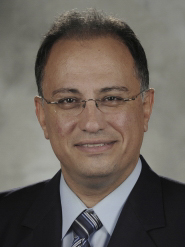
Manos M. Tentzeris (IEEE Fellow)
Ken Byers Professor, Georgia Tech, USA
Title: 3D/4D-Printed Flexible Autonomous Wireless Modules for IoT and Smart City Applications
Time: 17:30 - 18:00, Wednesday, February 20, 2019
Abstract:
In this talk, inkjet-/3D-printed antennas, interconnects, “smart” encapsulation and packages, RF electronics, microfluidics and sensors fabricated on glass, PET, paper and other flexible substrates are introduced as a system-level solution for ultra-low-cost mass production of Millimeter-Wave Modules for Communication, Energy Harvesting and Sensing applications. Prof. Tentzeris will touch up the state-of-the-art area of fully-integrated printable broadband wireless modules covering characterization of 3D printed materials up to E-band, novel printable “ramp” interconnects and cavities for IC embedding as well as printable structures for self-diagnostic and anti-counterfeiting packages. The presented approach could potentially set the foundation for the truly convergent wireless sensor ad-hoc networks of the future with enhanced cognitive intelligence and "rugged" packaging. Prof. Tentzeris will discuss issues concerning the power sources of "near-perpetual" RF modules, including flexible miniaturized batteries as well as power-scavenging approaches involving thermal, EM, vibration and solar energy forms. The final step of the presentation will involve examples from shape-changing 4D-printed (origami) packages, reflectarrays and mmW wearable (e.g. biomonitoring) antennas and RF modules. Special attention will be paid on the integration of ultrabroadband (Gb/sec) inkjet-printed nanotechnology-based backscattering communication modules as well as miniaturized printable wireless (e.g.CNT) sensors for Internet of Things (IoT), 5G and smart agriculture/biomonitoring applications. It has to be noted that the talk will review and present challenges for inkjet-printed organic active and nonlinear devices as well as future directions in the area of environmentally-friendly ("green") RF electronics and "smart-skin' conformal sensors.
Biography:
Professor Tentzeris was born and grew up in Piraeus, Greece.
He graduated from Ionidios Model School of Piraeus in 1987 and he received the
Diploma degree in Electrical Engineering and Computer Science (Magna Cum Laude)
from the National Technical University in Athens, Greece, in 1992 and the M.S.
and Ph.D. degrees in Electrical Engineering and Computer Science from the
University of Michigan, Ann Arbor in 1993 and 1998.
He is currently a Professor with the School of ECE, Georgia Tech and he has published more than 550 papers in refereed Journals and Conference Proceedings, 4 books and 23 book chapters, while he is in the process of writing 1 book. He has served as the Head of the Electromagnetics Technical Interest Group of the School of ECE, Georgia Tech. Also, he has served as the Georgia Electronic Design Center Associate Director for RFID/Sensors research from 2006-2010 and as the GT-Packaging Research Center (NSF-ERC) Associate Director for RF research and the leader of the RF/Wireless Packaging Alliance from 2003-2006. Also, Dr. Tentzeris is the Head of the A.T.H.E.N.A. Research Group (20 students and researchers) and has established academic programs in 3D Printed RF electronics and modules, flexible electronics, origami and morphing electromagnetics, Highly Integrated/Multilayer Packaging for RF and Wireless Applications using ceramic and organic flexible materials, paper-based RFID's and sensors, inkjet-printed electronics, nanostructures for RF, wireless sensors, power scavenging and wireless power transfer, Microwave MEM's, SOP-integrated (UWB, mutliband, conformal) antennas and Adaptive Numerical Electromagnetics (FDTD, MultiResolution Algorithms). He was the 1999 Technical Program Co-Chair of the 54th ARFTG Conference and he is currently a member of the technical program committees of IEEE-IMS, IEEE-AP and IEEE-ECTC Symposia. He was the TPC Chair for the IMS 2008 Conference and the Co-Chair of the ACES 2009 Symposium. He was the Chairman for the 2005 IEEE CEM-TD Workshop. He was the Chair of IEEE-CPMT TC16 (RF Subcommittee) and he was the Chair of IEEE MTT/AP Atlanta Sections for 2003. He is a Fellow of IEEE, a member of MTT-15 Committee, an Associate Member of European Microwave Association (EuMA), a Fellow of the Electromagnetics Academy, and a member of Commission D, URSI and of the the Technical Chamber of Greece. He is the Founder and Chair of the newly formed IEEE MTT-S TC-24 (RFID Technologies). He is one of the IEEE C-RFID DIstinguished Lecturers and he has served as one IEEE MTT-Distinguished Microwave Lecturers (DML) from 2010-2012.
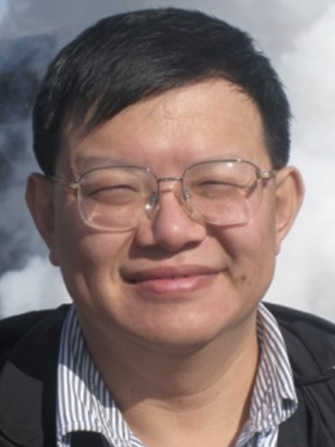
Li-Chun Wang (IEEE Fellow)
Professor and Chairman, National Chiao Tung University, Taiwan
Title: Machine Learning Radio Resource Management for Future Mobile Networks
Time: 17:00 - 17:30, Tuesday, February 19, 2019
Abstract:
We are witnessing the transition into the fifth generation (5G) cellular mobile systems. Is there any need for beyond 5G? A significant change in recent wireless networks is that much more data are collected from various sources, including channels, locations, radio access options, and network states. The availability of this large amount and various types of data can potentially transform the current knowledge-driven mobile network into a more powerful data-driven cognitive and learning-assisted mobile network. In this talk, we discuss how these learning algorithms can address the performance issues of high-capacity ultra-dense small cells in an environment with dynamical traffic patterns and time-varying channel conditions.
First, we introduce a bi-adaptive self-organizing network (Bi-SON) to exploit the power of data-driven resource management in ultra-dense small cells (UDSC). On top of the Bi-SON framework, we propose a polynomial regression supervised learning, and an affinity propagation unsupervised learning algorithm to improve energy efficiency and reduce interference of the operator deployed and the plug-and-play small cells, respectively. Finally, we discuss the opportunities and challenges of reinforcement learning and deep reinforcement learning (DRL) in more decentralized, ad-hoc, and autonomous modern networks, such as Internet of things (IoT), vehicle-to-vehicle networks, and unmanned aerial vehicle (UAV) networks.
Biography:
Li-Chun Wang (M'96 -- SM'06 -- F'11) received Ph. D. degree from the Georgia Institute of Technology, Atlanta, in 1996. From 1996 to 2000, he was with AT&T Laboratories, where he was a Senior Technical Staff Member in the Wireless Communications Research Department. Since August 2000, he has joined the Department of Electrical and Computer Engineering of National Chiao Tung University in Taiwan and is jointly appointed by Department of Computer Science and Information Engineering of the same university.
Dr. Wang was elected to the IEEE Fellow in 2011 for his contributions to cellular architectures and radio resource management in wireless networks. He won the Distinguished Research Award of National Science Council, Taiwan (2012). He was the co-recipients of IEEE Communications Society Asia-Pacific Board Best Award (2015), Y. Z. Hsu Scientific Paper Award (2013), and IEEE Jack Neubauer Best Paper Award (1997). His current research interests are in the areas of software-defined mobile networks, heterogeneous networks, and data-driven intelligent wireless communications. He holds 23 US patents, and have published over 300 journal and conference papers, and co-edited a book, “Key Technologies for 5G Wireless Systems,” (Cambridge University Press 2017).
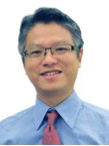
Yonggang Wen
Associate Professor, Nanyang Technological University (NTU), Singapore
Title: Learning to Appreciate: Transforming Multimedia Communications via Deep Video Analytics
Time: 17:30 - 18:00, Thursday, February 21, 2019
Abstract:
Media-rich applications will continue to dominate mobile data traffic with an exponential growth, as predicted by Cisco Video Index. The improved quality of experience (QoE) for the video consumers plays an important role in shaping this growth. However, most of the existing approaches in improving video QoE are system-centric and model-based, in that they tend to derive insights from system parameters (e.g., bandwidth, buffer time, etc) and propose various mathematical models to predict QoE scores (e.g., mean opinion score, etc). In this talk, we will share our latest work in developing a unified and scalable framework to transform multimedia communications via deep video analytics. Specifically, our framework consists two main components. One is a deep-learning based QoE prediction algorithm, by combining multi-modal data inputs to provide a more accurate assessment of QoE in real-time manner. The other is a model-free QoE optimization paradigm built upon deep reinforcement learning algorithm. Our preliminary results verify the effectiveness of our proposed framework. We believe that the hybrid approach of multimedia communications and computing would fundamentally transform how we optimization multimedia communications system design and operations.
Biography:
Dr. Yonggang Wen is an Associate Professor with School of Computer Science and Engineering (SCSE) at Nanyang Technological University (NTU), Singapore. He also serves as the Associate Dean (Research) at the College of Engineering, and the Director of Nanyang Technopreneurship Centre at NTU. He received his PhD degree in Electrical Engineering and Computer Science (minor in Western Literature) from Massachusetts Institute of Technology (MIT), Cambridge, USA, in 2007.
Dr. Wen has worked extensively in learning-based system prototyping and performance optimization for large-scale networked computer systems. In particular, his work in Multi-Screen Cloud Social TV has been featured by global media (more than 1600 news articles from over 29 countries) and received 2013 ASEAN ICT Awards (Gold Medal). His work on Cloud3DView, as the only academia entry, has won 2016 ASEAN ICT Awards (Gold Medal) and 2015 Datacentre Dynamics Awards – APAC (‘Oscar’ award of data centre industry). He is a co-recipient of 2015 IEEE Multimedia Best Paper Award, and a co-recipient of Best Paper Awards at 2016 IEEE Globecom, 2016 IEEE Infocom MuSIC Workshop, 2015 EAI/ICST Chinacom, 2014 IEEE WCSP, 2013 IEEE Globecom and 2012 IEEE EUC. He was the sole winner of 2016 Nanyang Awards in Entrepreneurship and Innovation at NTU, and received 2016 IEEE ComSoc MMTC Distinguished Leadership Award. He serves on editorial boards for ACM Transactions Multimedia Computing, Communications and Applications, IEEE Transactions on Circuits and Systems for Video Technology, IEEE Wireless Communication Magazine, IEEE Communications Survey & Tutorials, IEEE Transactions on Multimedia, IEEE Transactions on Signal and Information Processing over Networks, IEEE Access Journal and Elsevier Ad Hoc Networks, and was elected as the Chair for IEEE ComSoc Multimedia Communication Technical Committee (2014-2016). His research interests include cloud computing, blockchain, green data centre, distributed machine learning, big data analytics, multimedia network and mobile computing.
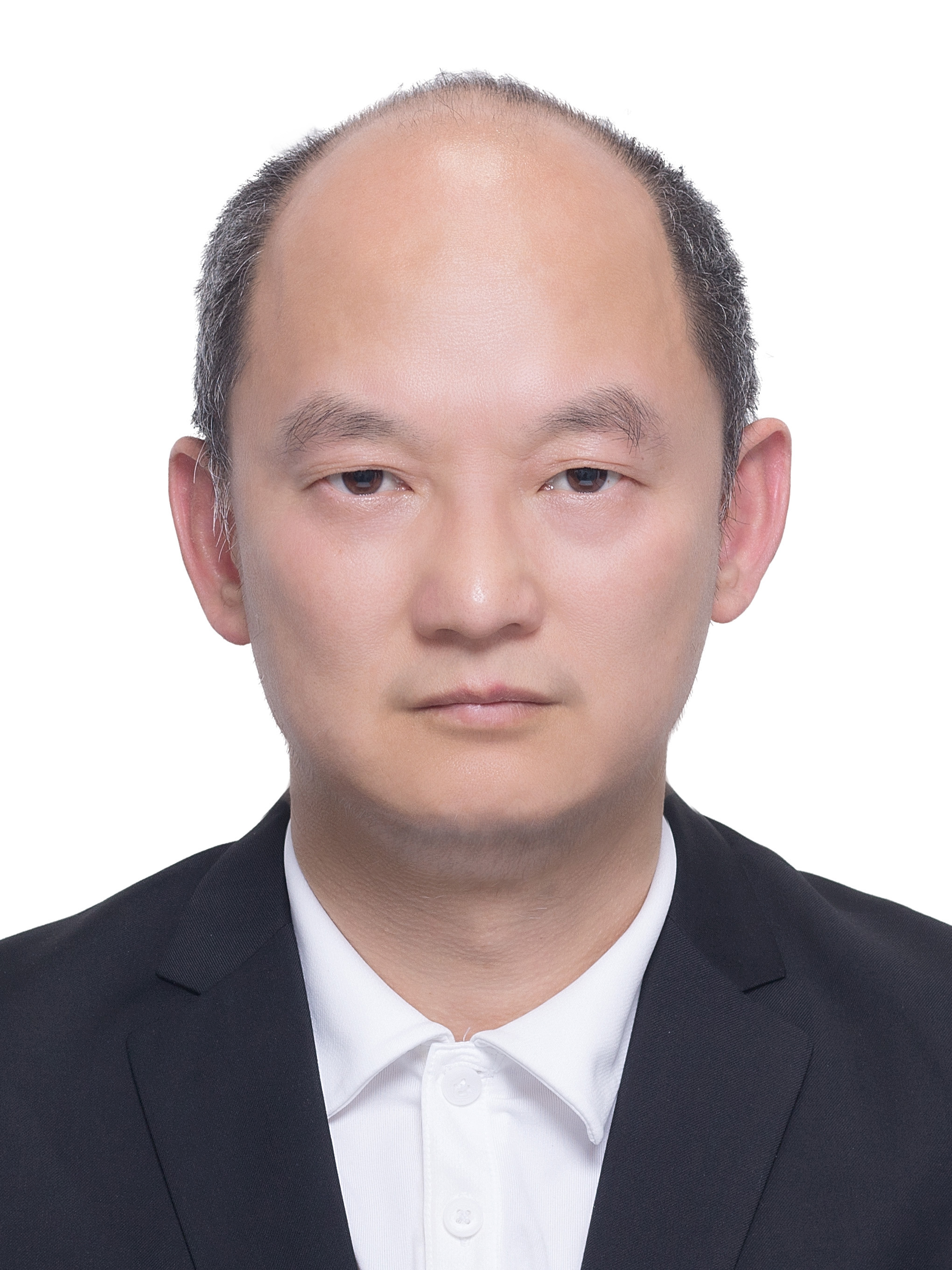
Jun Wu
Professor, Tongji University, P.R. China
Title: The Visual Communication over Wireless Networks
Time: 15:00 - 15:30, Thursday, February 21, 2019
Abstract:
The tradition radio access network is built on the specific hardware platform, now is evolving towards cloud computing platform. With the new mobile edge computing (MEC) architecture, the communication and computation is converging, which brings many new opportunities and challenges for visual communication. The introduction of edge cache can reduce unnecessary traffic load and improve latency in the wireless access networks. How to optimize the caching strategy which aims to maximize the successful transmission probability (STP) of the video contents at edge base stations (BSs) is an interesting problems. We try to develop a gradient based iterative algorithm to solve the general random caching strategy optimization problem. Furthermore, the visual communication produces big data traffics. It puts forward a huge challenge to the wireless networks, while its abundant information provides potential to improve the spectrum efficiency significantly. We investigate a novel data assisted communication of mobile image scheme, which utilizes a large amount of correlated (similar) images stored in the cloud to improve the spectrum efficiency and visual quality.
Biography:
Jun Wu is a professor in College of Electronic and Information Engineering, Tongji University. He received his B.S. degree and M.S in Information Engineering from XIDIAN University in 1993 and 1996, respectively. He received his Ph.D. degrees in Information Engineering from Beijing University of Posts and Telecomm. in 1999. Wu joined Tongji University as a Professor in Dec. 2010. He has been a principal scientist in Huawei from 2009 to 2010, and also a principal scientist in Broadcom Inc. from 2006 to 2009. His research interests include information theory, wireless communication, and digital signal processing. He has authored or co-authored over 100 papers, two chapters of a book, and filed more than 50 patents.
Wu is currently an IEEE senior member, ACM member. He is serving as an Associate Editor of IEEE Transactions on Multimedia (TMM), Associate Editor of IEEE Wireless Communications Letters (WCL). He served as TPC Co-Chair of IEEE International Conference on Multimedia and Expo (ICME) 2019, IEEE GlobeCom 2016 Symposium Chair of Communications Software, Services and Multimedia Apps, Chinacom 2015 TPC Co-chair, IEEE ICCC 2014 Wireless Networking and Multimedia Symposium Co-chair.
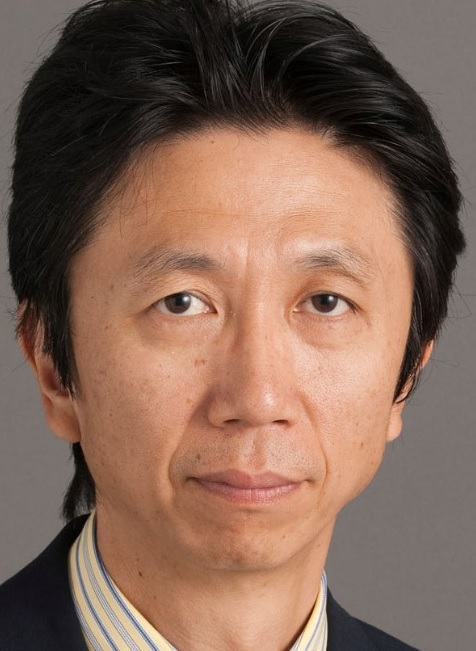
Naoaki Yamanaka (IEEE/IEICE Fellow)
Professor, Keio University, Japan
Title: Self-organized autonomous driving vehicle controlling network using dynamic migrated edge computer function
Time: 16:00 - 16:30, Monday, February 18, 2019
Abstract:
Autonomous driving vehicle control by edge computer network has been
proposed. Each vehicle has a agent program on the edge and
automatically moved to adjacent edge computer following to the
vehicle. Each agent of the vehicle are communicated each-other in the
cyber network. Then we can realize fairness as well as priority control
among the vehicle. We employ triple redundancy and majority rule to
achieve high-reliability and less than 10 ms control delay try to be
guaranteed. In addition, each vehicle has an IoT sensor including
fine-GPS, So all precious position and speed of the vehicle can be
monitored. Using network AI function detect parking car or obstacles
on the road automatically according to the each vehicle position and
speed, and also automatically change the root or lane of the following
vehicle. This function is realized combination of center cloud and edge
cloud. We constricted experimental course, vehecle and edge computer
with center cloud and tested in the campus test bed. Our experimental
set-up of the vehicle and vehicle control network shows the
effectiveness of the self-organized control method for vehcle. In this
presentation, I will shows the detail experimental results. This
architecture and experimental results can be apply to the future smart
and connected community.
Biography:
Dr. Yamanaka graduated from Keio University, Japan where he received B.E., M.E., and Ph. D. degrees in engineering in 1981, 1983 and 1991, respectively. In 1983 he joined Nippon Telegraph and Telephone Corporation’s (NTT’s) Communication Switching Laboratories, Tokyo, Japan. His research areas are Network Architecture in Optical Network, Cloud Computing, Smart Network, Communication Protocol, and Optical Switching System including Optical Devices. He was a vice director of Asia Pacific Board at IEEE Communications Society, and was an Editor of IEICE Transaction on Communications as well as a director at IEICE. He is an IEEE Fellow and an IEICE Fellow.
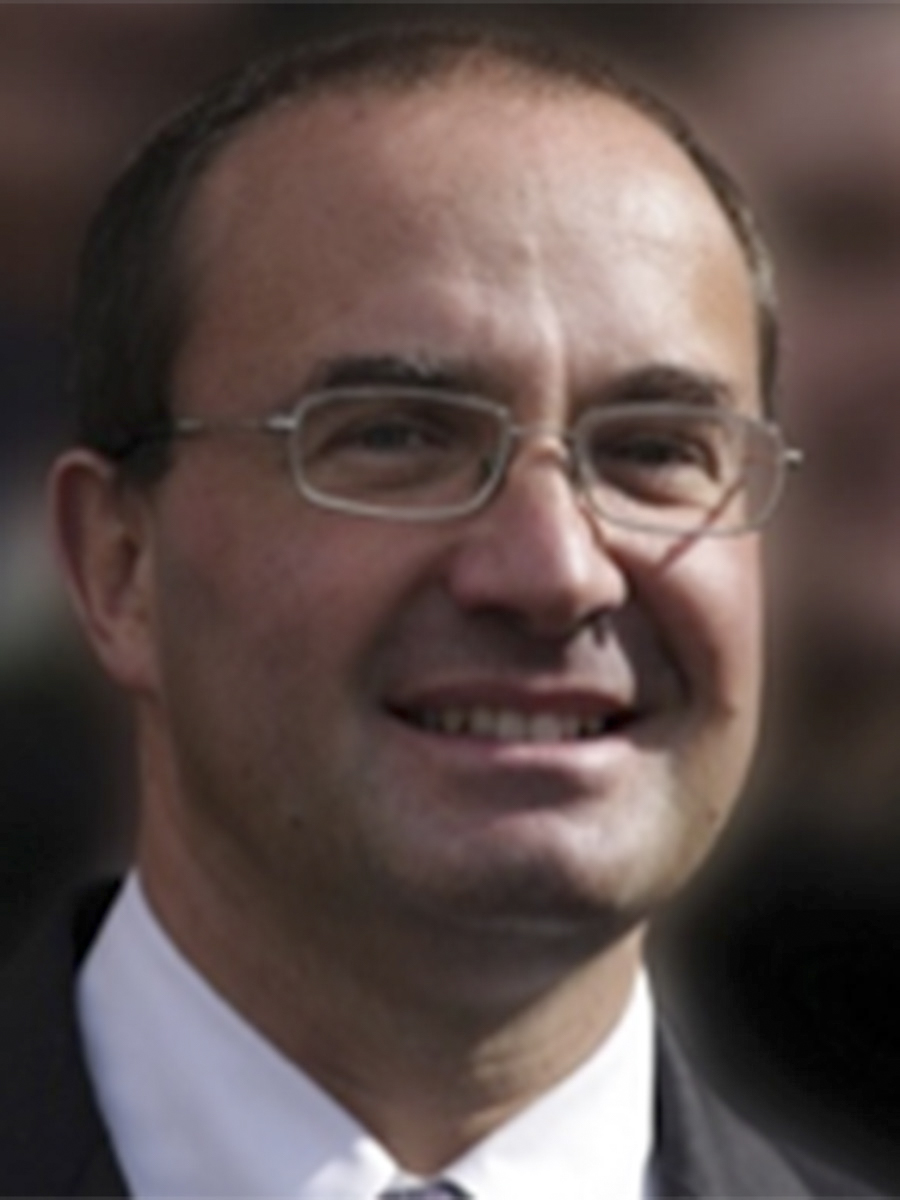
Michele Zorzi (IEEE Fellow)
Professor, University of Padova, Italy
Title: Machine Learning at the Edge: A Data-Driven Architecture with Applications to 5G Cellular Networks
Time: 17:00 - 17:30, Wesnesday, February 20, 2019
Abstract:
The fifth generation of cellular networks (5G) will rely on edge cloud deployments to satisfy the ultra-low latency demand of future applications. In this talk, we argue that an edge-based deployment can also be used as an enabler of advanced Machine Learning (ML) applications in cellular networks, thanks to the balance it strikes between a completely distributed and a centralized approach. First, we will present an edge-controller-based architecture for cellular networks. Second, by using real data from hundreds of base stations of a major U.S. national operator, we will provide insights on how to dynamically cluster the base stations under the domain of each controller. Third, we will describe how these controllers can be used to run ML algorithms to predict the number of users, and a use case in which these predictions are used by a higher-layer application to route vehicular traffic according to network Key Performance Indicators (KPIs). We show that prediction accuracy improves when based on machine learning algorithms that exploit the controllers’ view with respect to when it is based only on the local data of each single base station.
Biography:
Michele Zorzi received his Laurea and Ph.D.
degrees in electrical engineering from the University of Padova in 1990 and
1994, respectively. During academic year 1992/1993 he was on leave at the
University of California San Diego (UCSD). After being affiliated with the
Dipartimento di Elettronica e Informazione, Politecnico di Milano, Italy, the
Center for Wireless Communications at UCSD, and the University of Ferrara, in
November 2003 he joined the faculty of the Information Engineering Department of
the University of Padova, where he is currently a professor. His present
research interests include performance evaluation in mobile communications
systems, random access in mobile radio networks, ad hoc and sensor networks and
IoT, energy constrained communications protocols, 5G millimeter-wave cellular
systems, and underwater communications and networking. He was Editor-in-Chief of
IEEE Wireless Communications from 2003 to 2005, Editor-in-Chief of IEEE
Transactions on Communications from 2008 to 2011, and is currently the founding
Editor-in-Chief of IEEE Transactions on Cognitive Communications and Networking.
He was Guest Editor for several Special Issues in IEEE Personal Communications,
IEEE Wireless Communications, IEEE Network, and IEEE JSAC. He served as a
Member-at-Large in the Board of Governors of the IEEE Communications Society
from 2009 to 2011, and as its Director of Education from 2014 to 2015. He is a
Fellow of the IEEE.